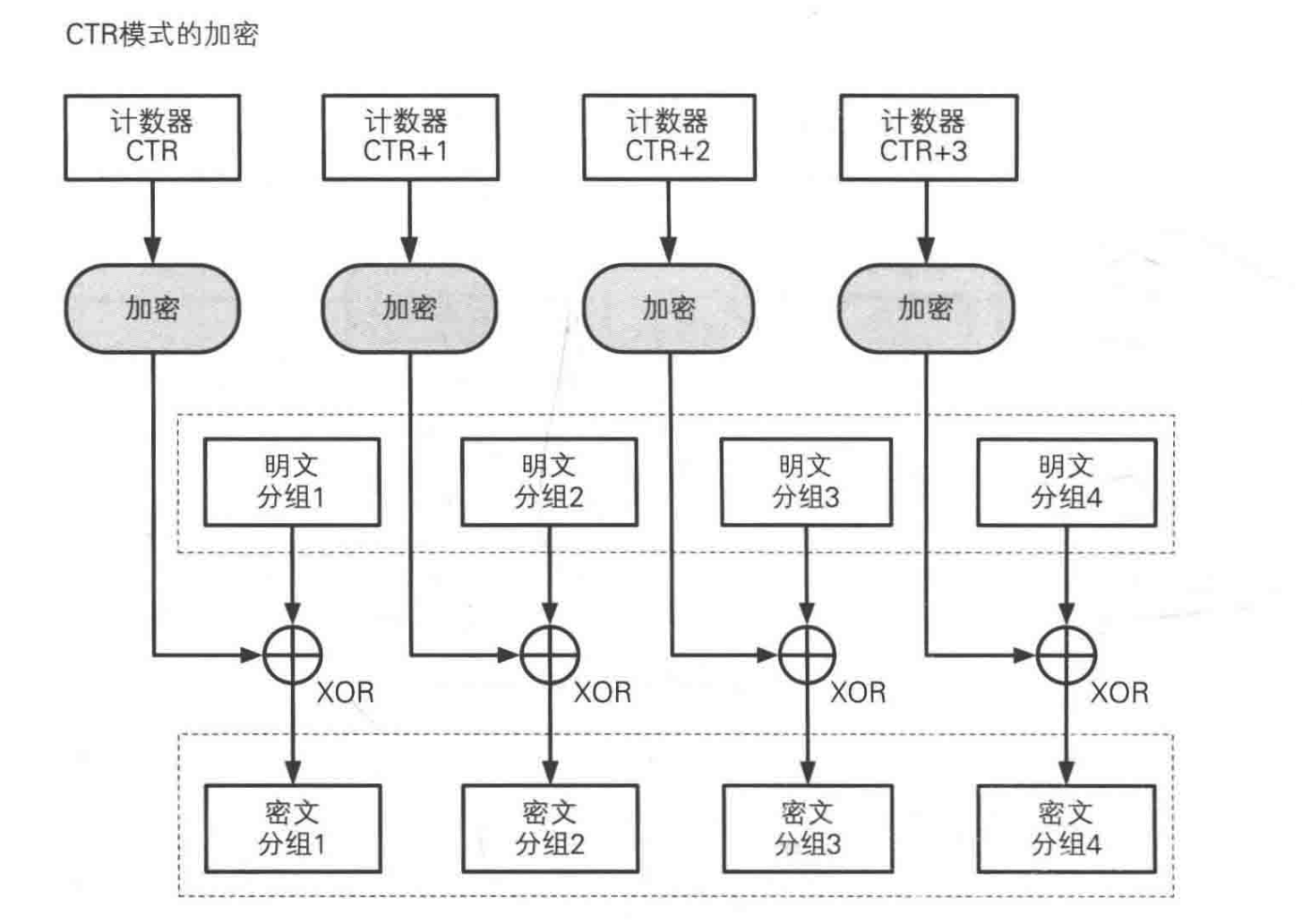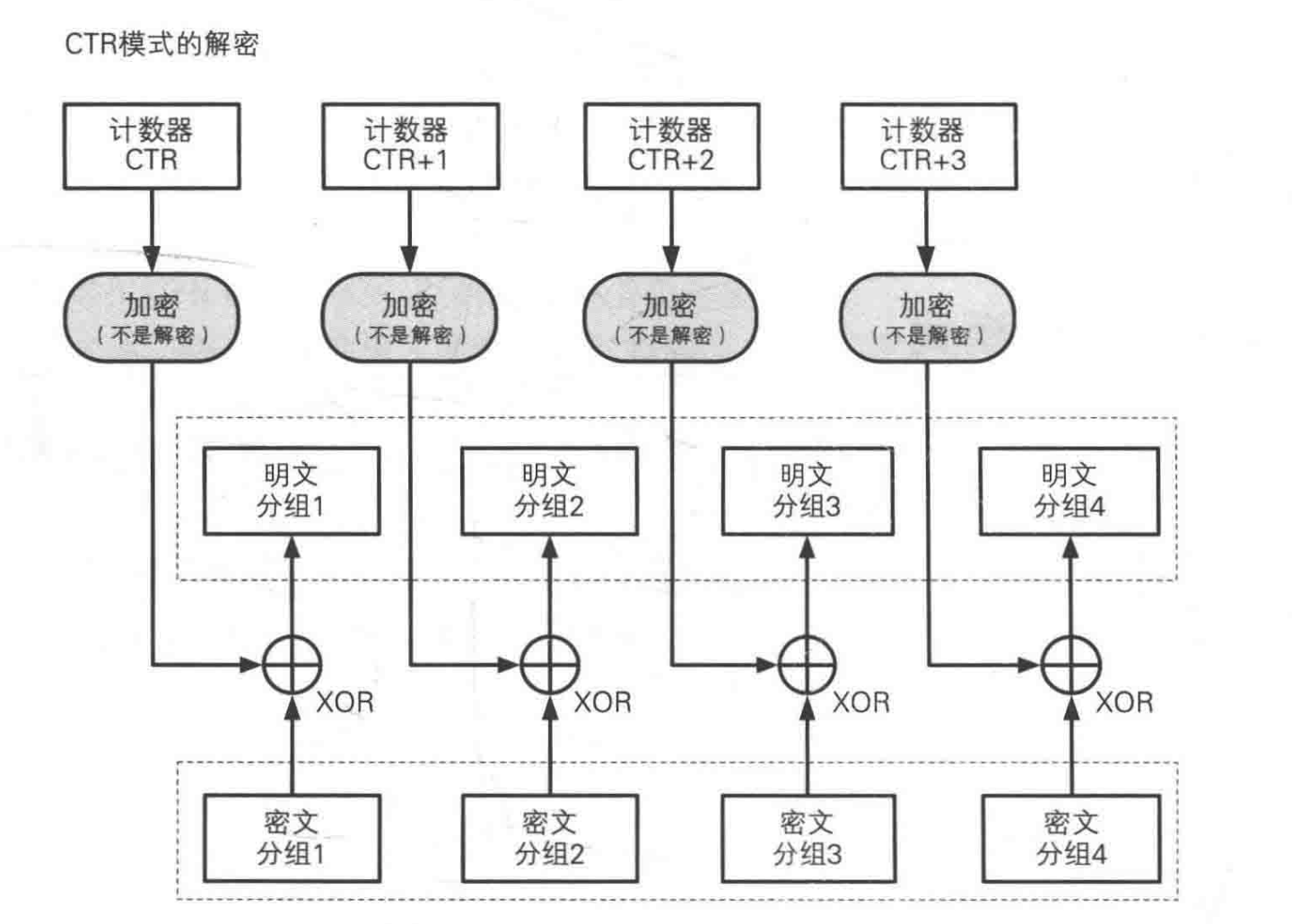CS134 Notes
Lec1 Class Info
Course Description
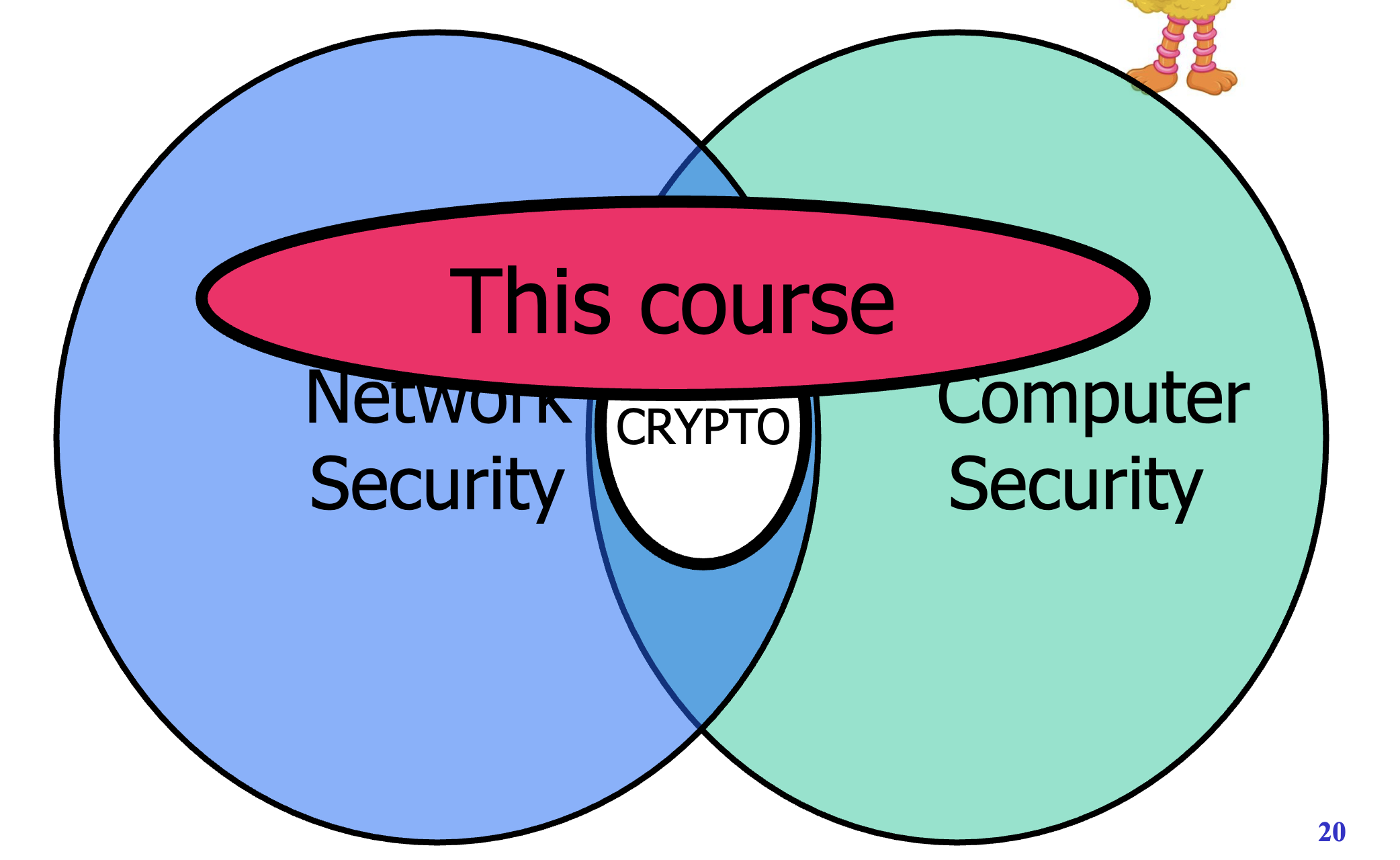
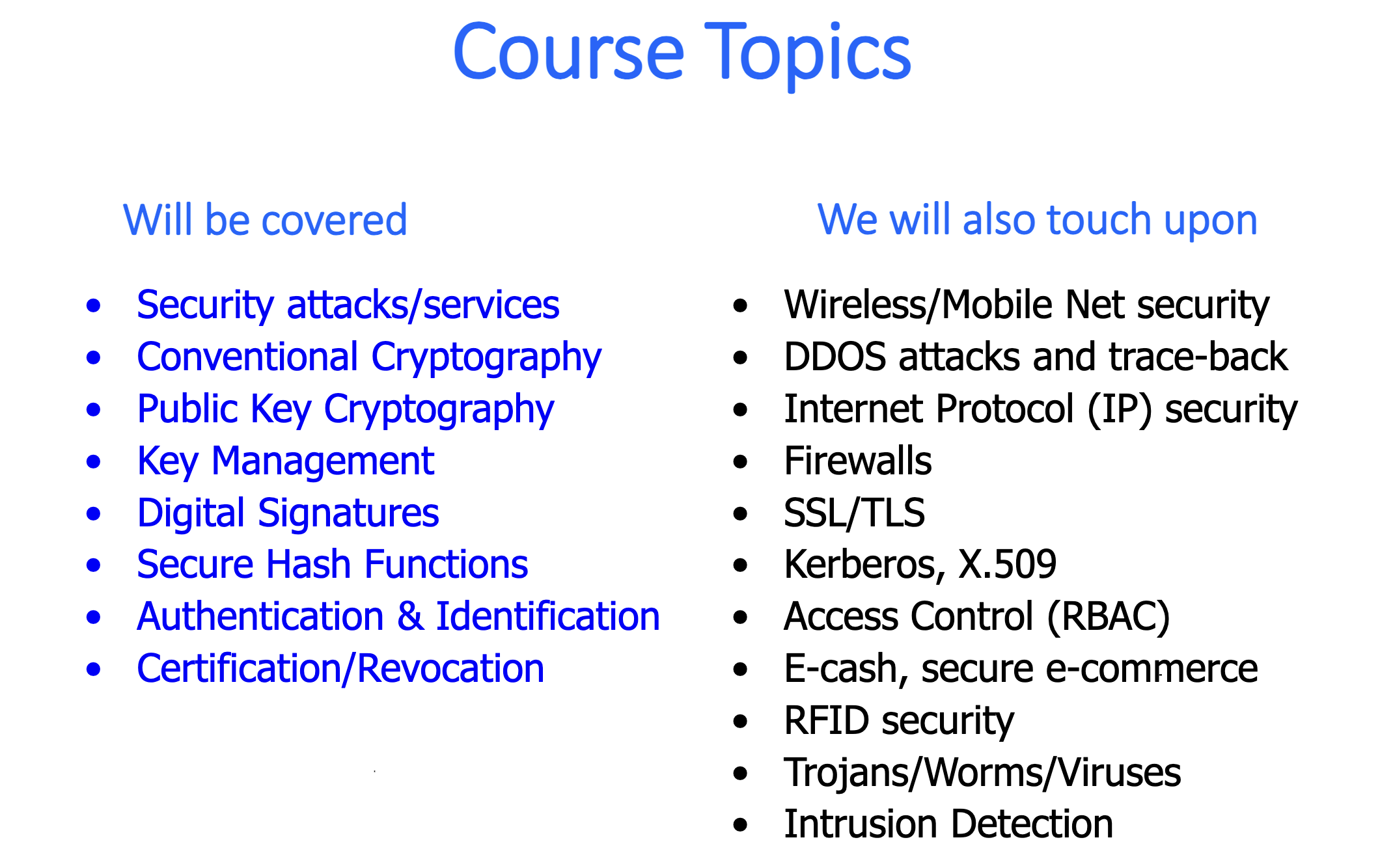
Terminology
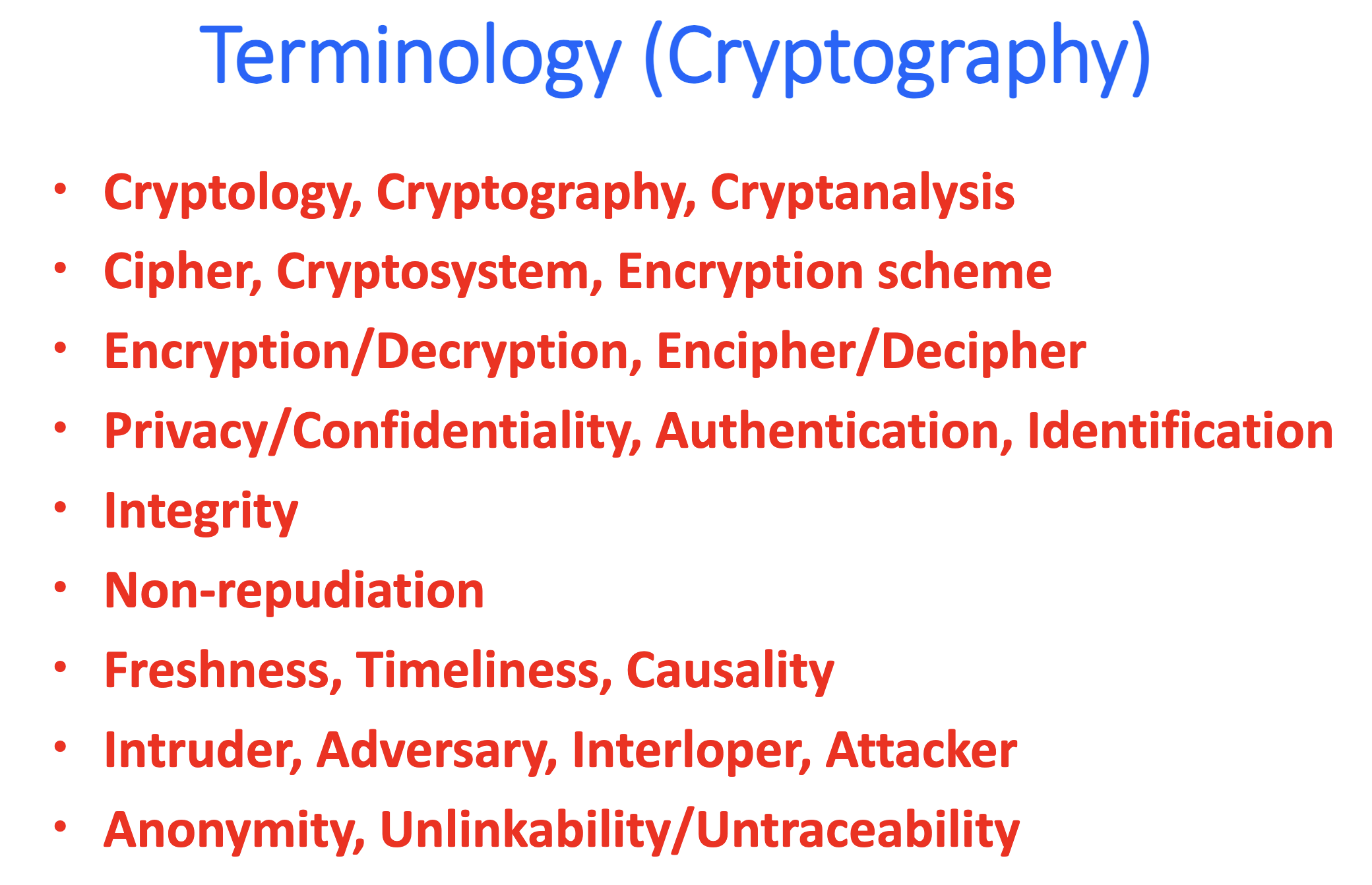
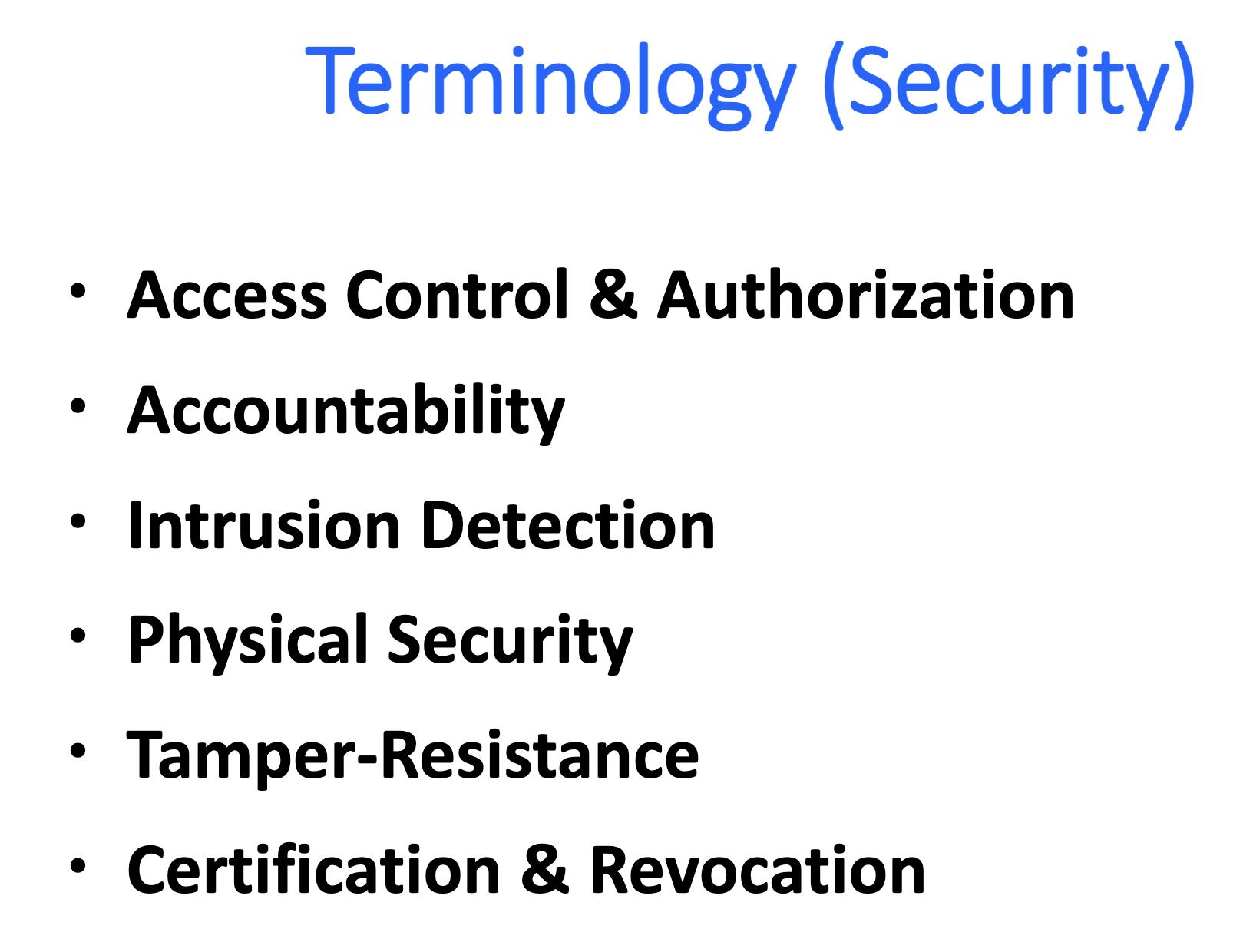
-
Security Attack: an action (or event) that aims to compromise (undermine) security of information or resource.
Interruption:attack on availability.Interception:attack on confidentiality.Modification:attack on integrity.Fabrication:attack on authenticity.
-
Security Mechanism: a measure (technique or method) designed to detect, prevent, or recover from, a security attack.
Cryptography→ confidentiality, authentication, identification, integrity, etc.Software Controls(e.g., in databases, operating systems) → protect system from users and users from each otherHardware Controls(e.g., smartcards, badges, biometrics) → authenticate holders (users)Policies(e.g., frequent password changes, separation of duty rules) → prevent insider attacksPhysical Controls(doors, guards, moats, etc.) → physical access controls
-
Security Service: something that enhances security. A “Security Service” makes use of one or more “Security Mechanisms”.
Confidentiality:to assure information privacy and secrecy.Authentication:who created or sent data.Integrity:data has not been altered.Access control:prevent misuse of resources.Availability:offer access to resources, permanence, non-erasure.

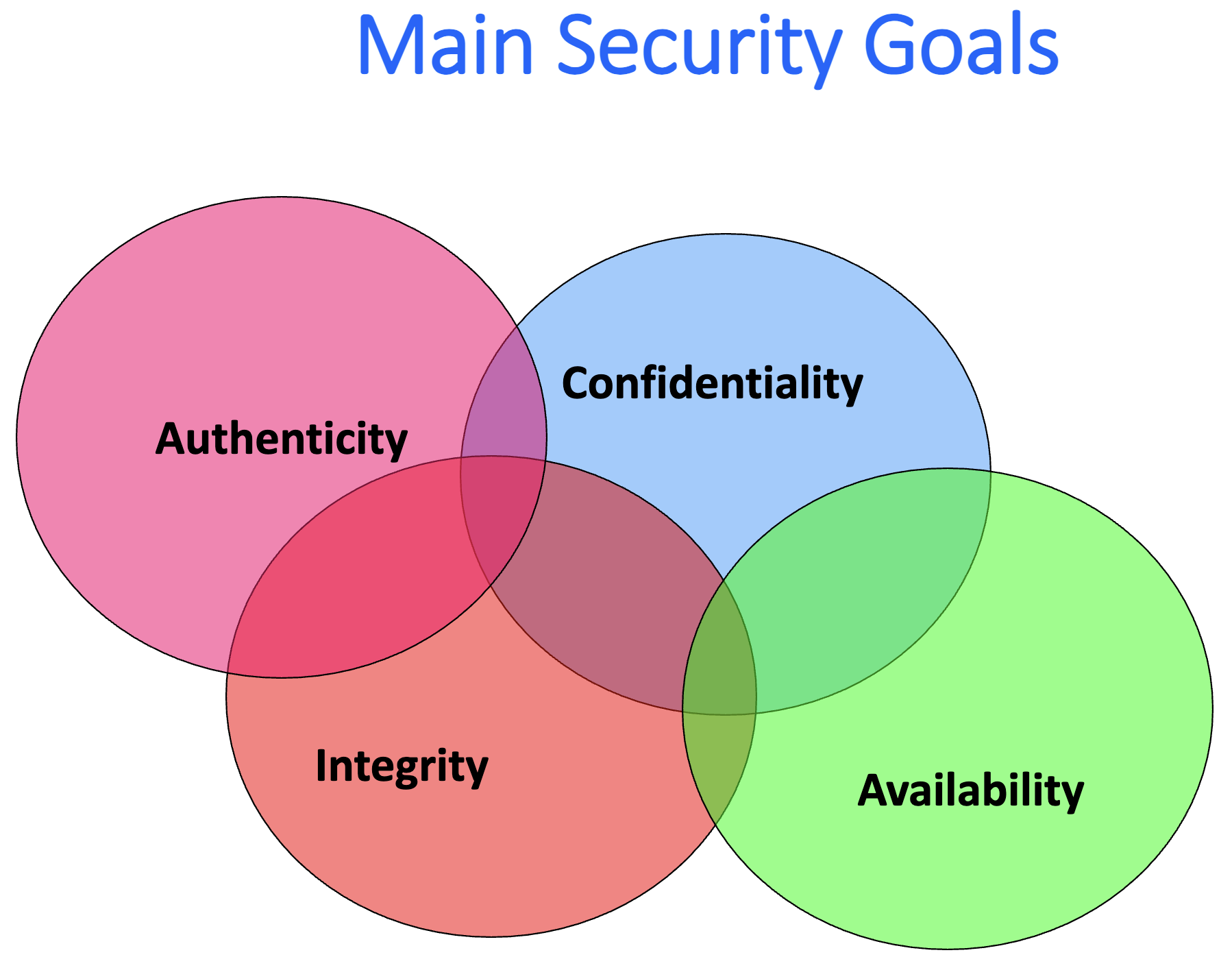
Lec 2 Cryptography History & Methods
Crypto Applied in Several Levels
Algorithms:encryption, digital signatures, hashing, Random Number Generators (RNGs), secure erasure.Protocols:key distribution, authentication, identification, log-in, e-payment, etc.Systems:electronic cash, secure file-systems, smartcards, VPNs, e-voting, crypto-currencies, etc.Attacks:on all the above.
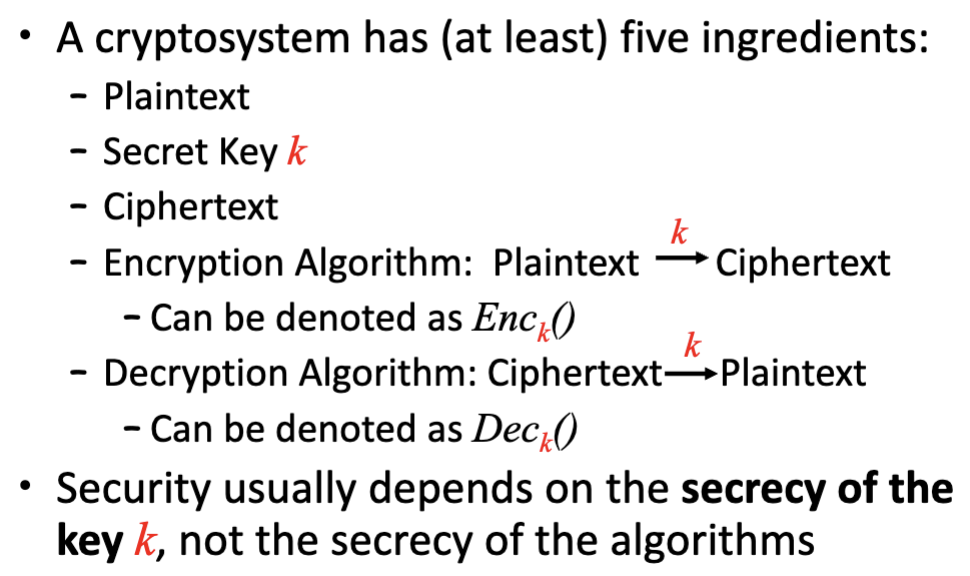

Historical (Primitive) Ciphers
-
Shift(e.g., Caesar): -
Affine: -
Substitution: -
Vigenere:- This is simple version of
vigenere cipherby just adding every key character; and it is better to mod 26 in order to have a valid character. - Another method of
vigenere cipher. Check the image right above.
- This is simple version of
-
Vernam:One-Time Pad (OTP)-
If the One-time pad stream is completely randomized,
vernam cipheris the most safe cipher. -
,
-
Disadvantages:
- It is impractical to have an
one-time pad streamfor a long text. - How to exchange the
one-time pad streamwith two sides?
- It is impractical to have an
-
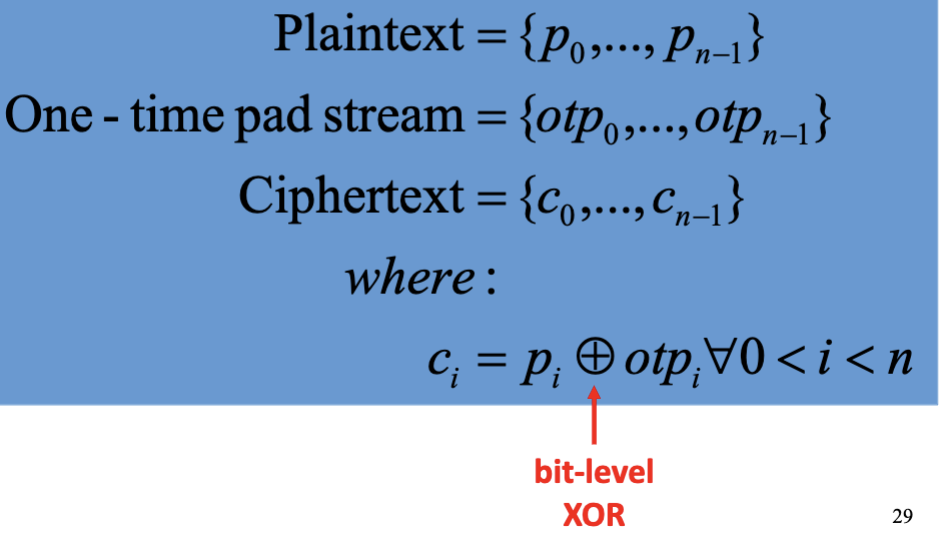
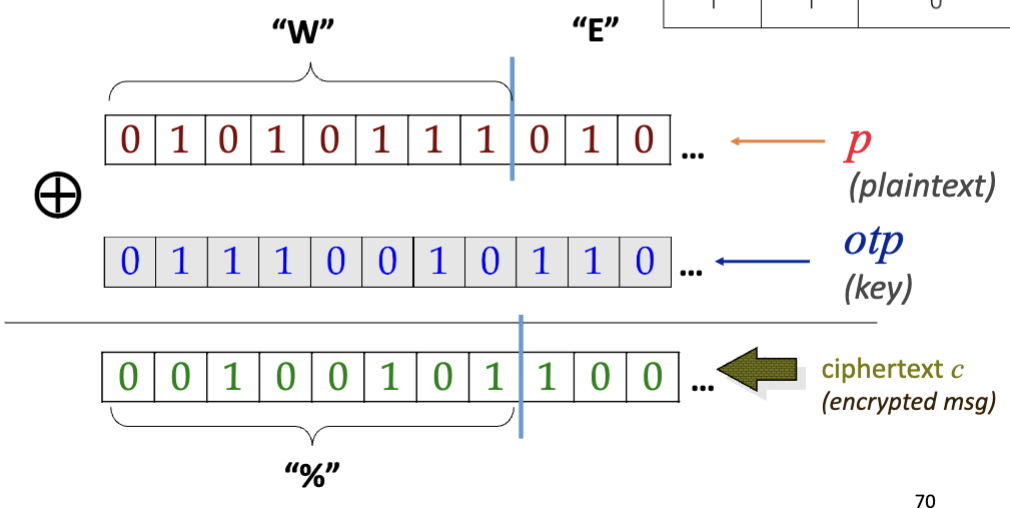

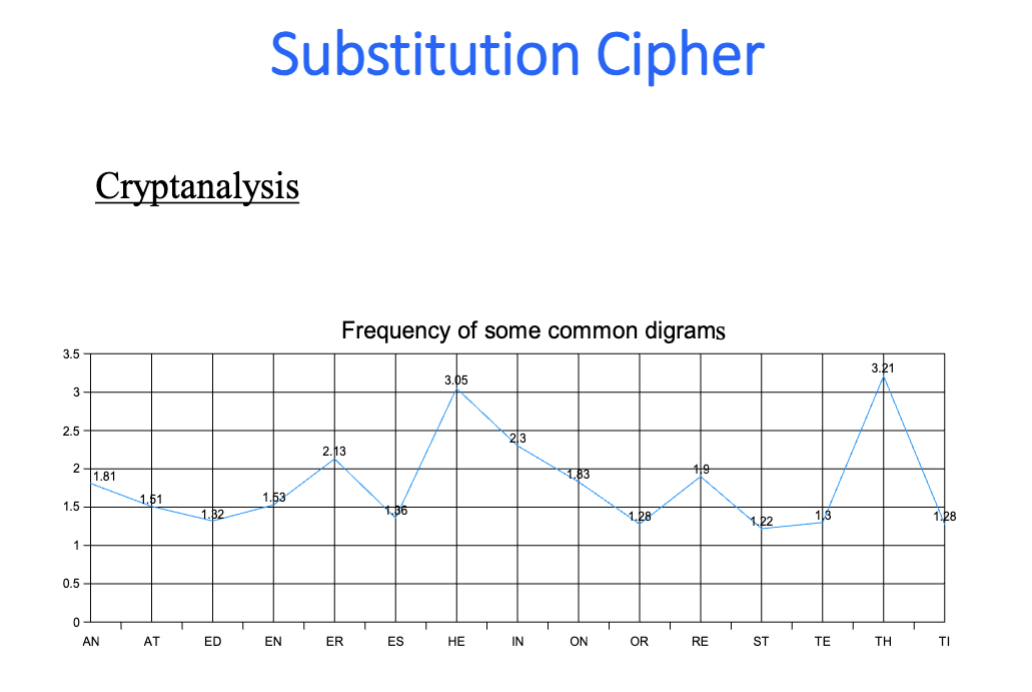
Crypto Basics
| Cryptosystem | Crypto Attacks |
|---|---|
P: plaintext |
Ciphertext Only |
C: ciphertext |
Knownplain Text |
K: keyspace |
Chosen Plaintext |
E: encryption rules |
Chosen Ciphertext |
D: decryption rules |
Brute Force |
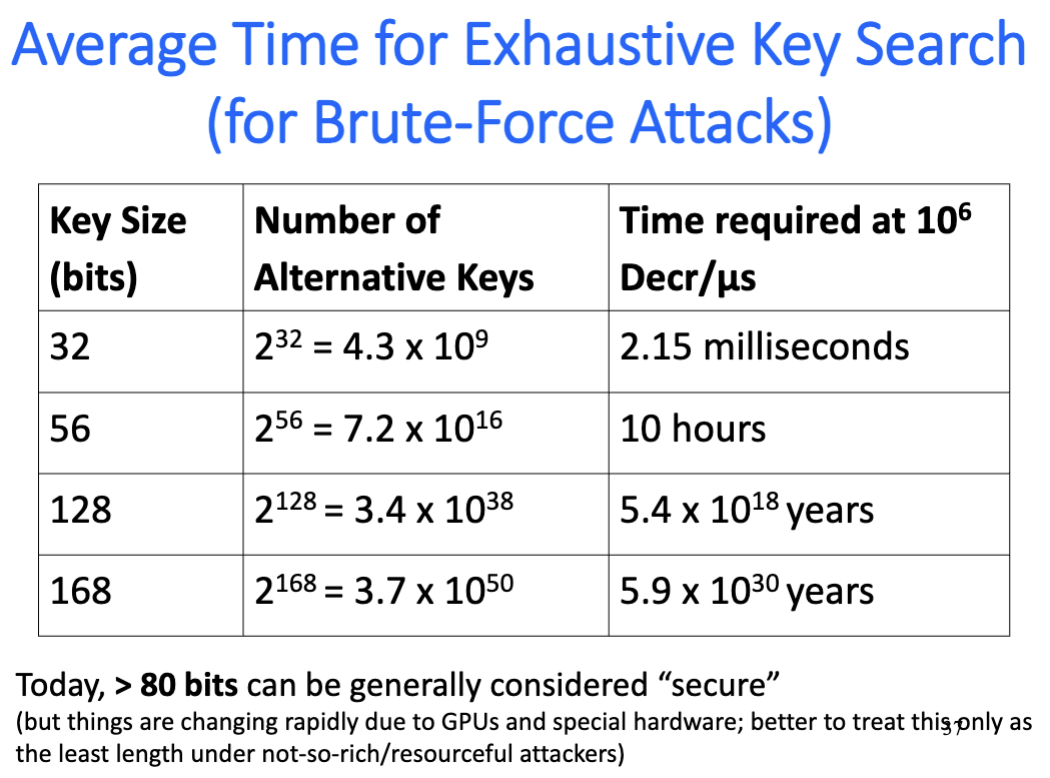
Lec 3 Encryption Types
Complexity
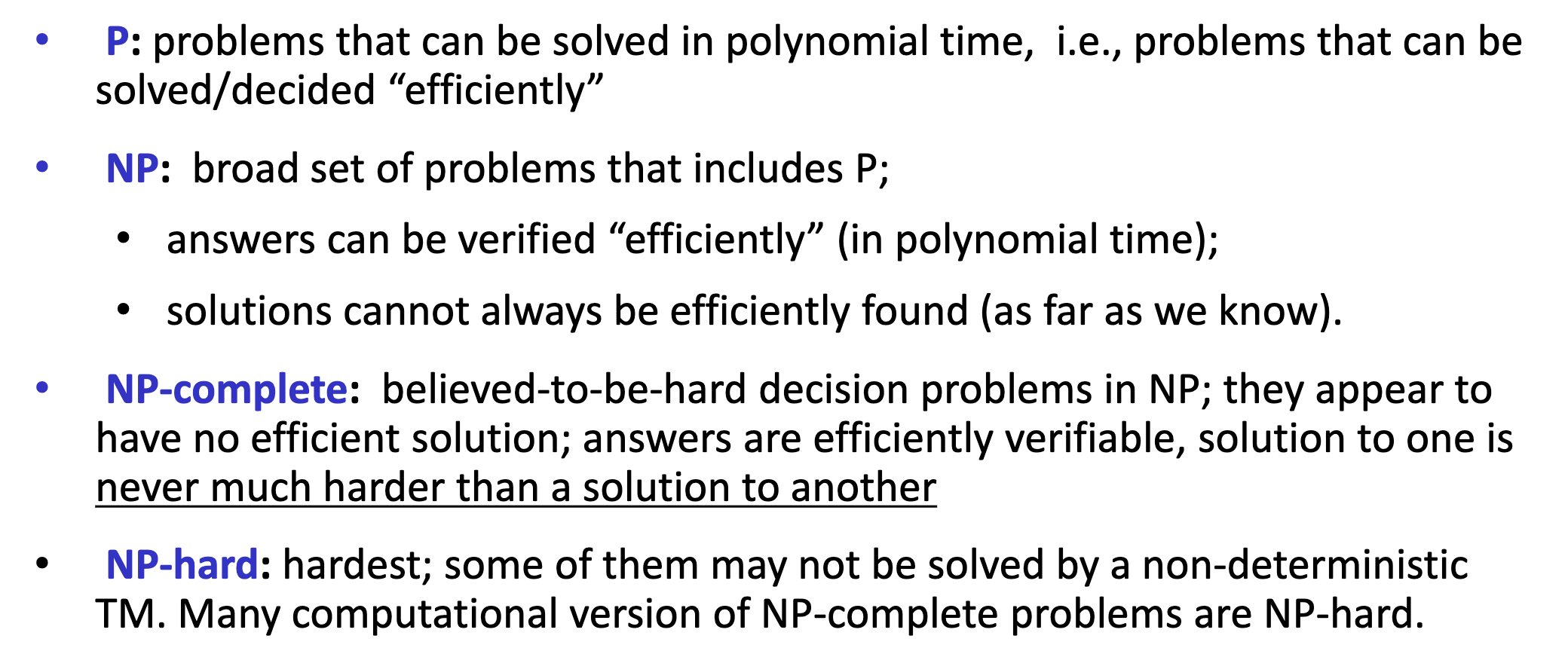
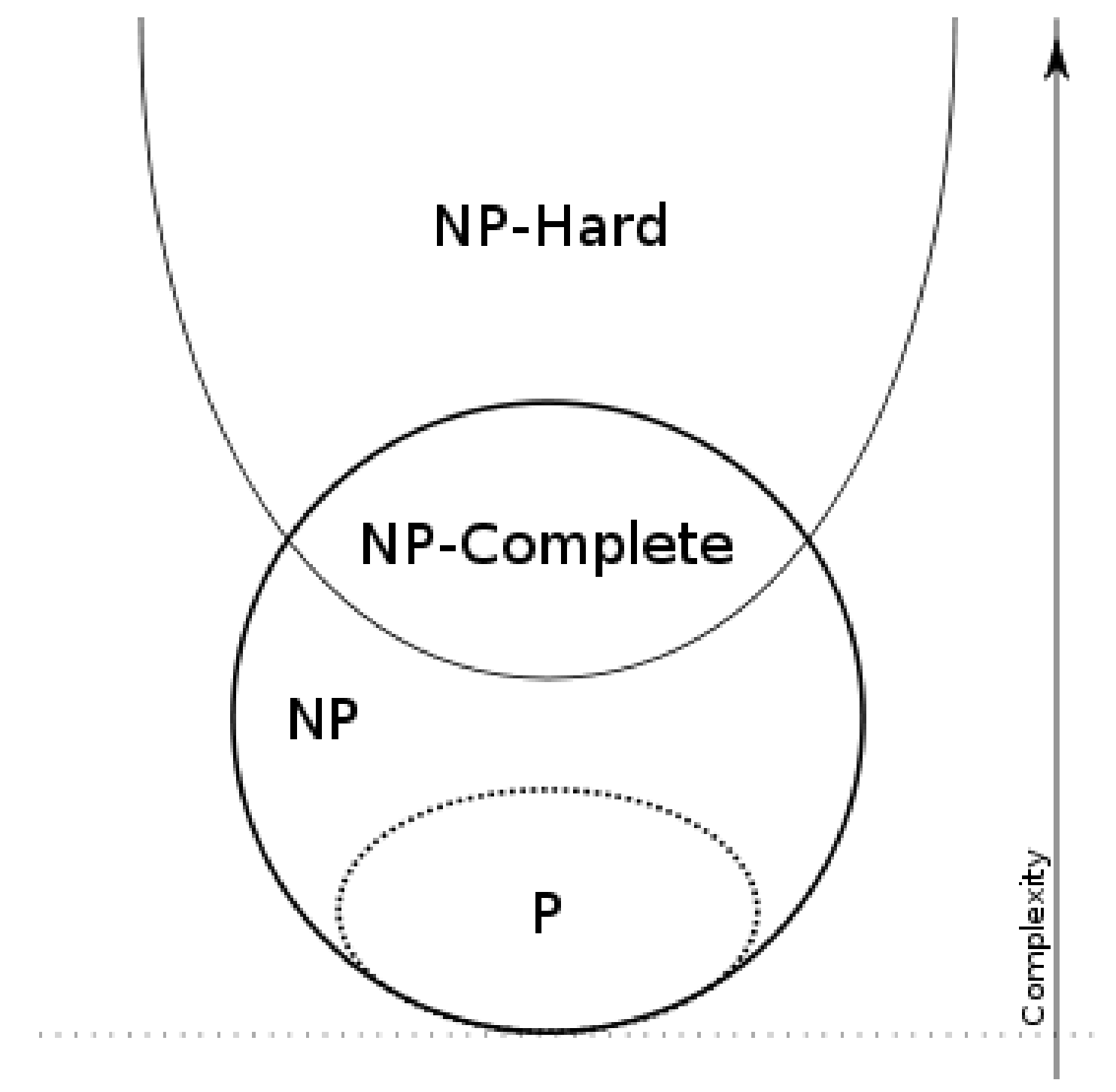

Cryptosystems
Classified along three dimensions:
- Type of operations used for transforming plaintext into ciphertext
- Binary arithmetic: shifts, XORs, ANDs, etc. Typical for conventional/symmetric encryption.
- Integer arithmetic. Typical for public key/asymmetric encryption.
- Number of keys used
- Symmetric or conventional (single key used)
- Asymmetric or public-key (2 keys: 1 to encrypt, 1 to decrypt)
- How plaintext is processed
- One bit at a time – “stream cipher”
- A block of bits – “block cipher”
Symmetric Encryption
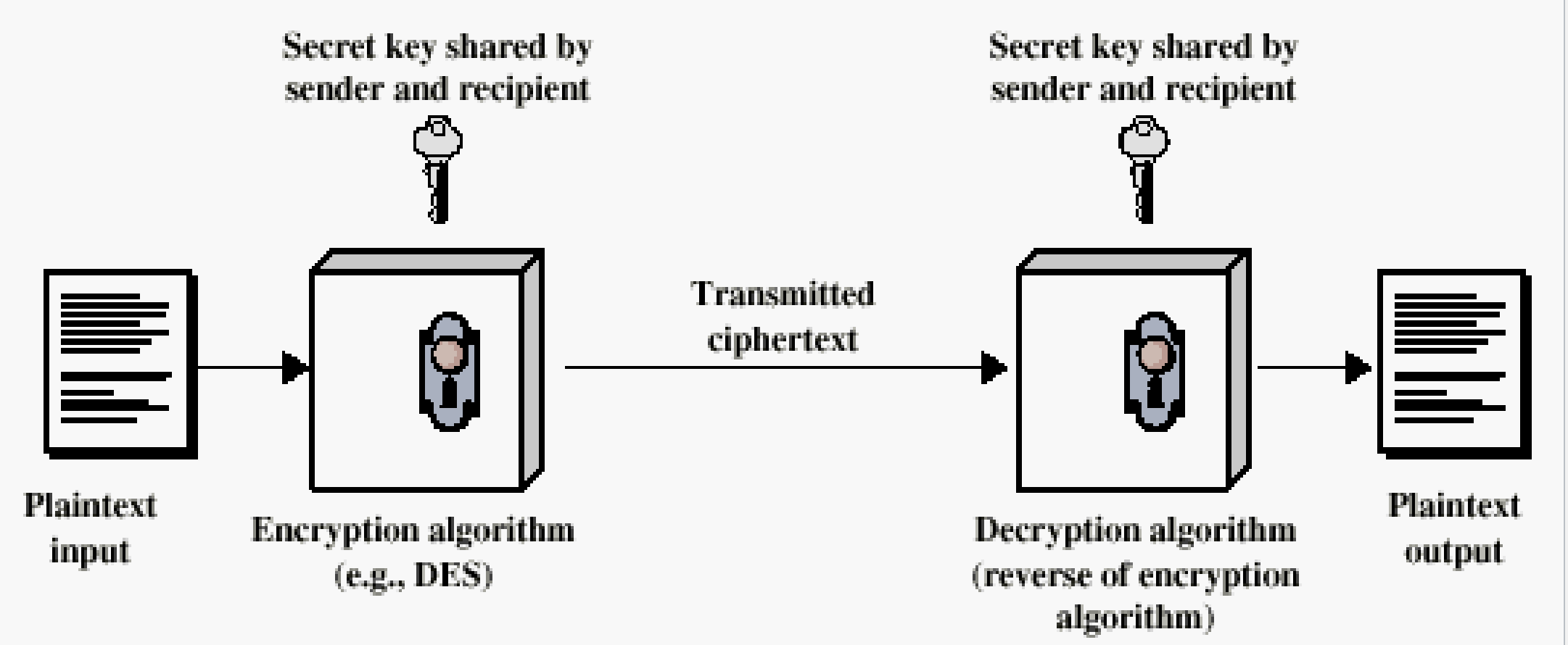
Examples
- Substitution
- Vernam OTP
- DES
- AES
Usage
- Message transmission (confidentiality):
- Communication over insecure channels.
- Secure storage:
- crypt on Unix.
- Strong authentication: proving knowledge of a secret without revealing it:
- Eve can obtain
<plaintext, ciphertext>pairs (known plaintext attack). - Challenge should be chosen from a large pool.
- Eve can obtain
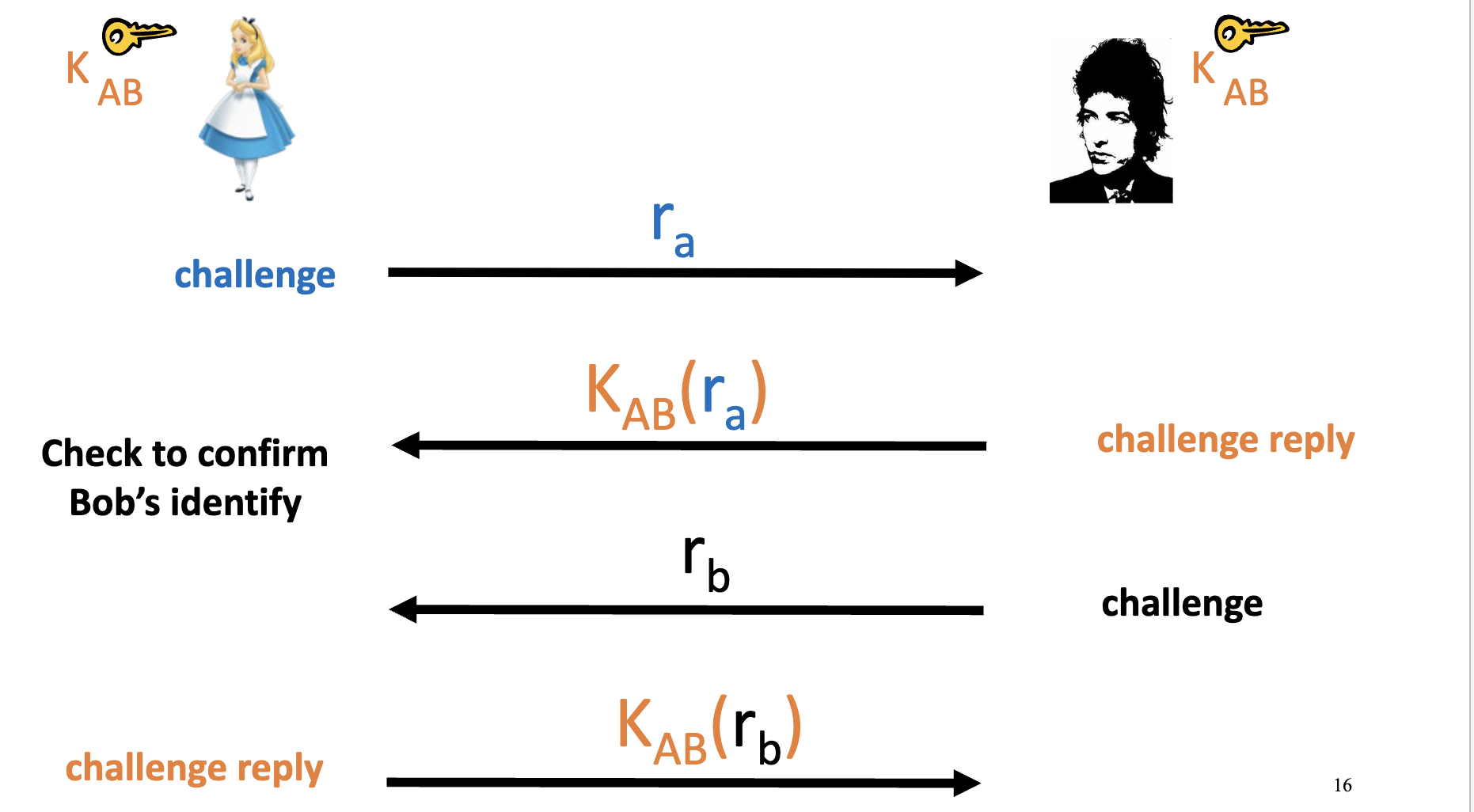
- Integrity checking: fixed-length checksum for message via symmetric key cryptography:
- Send MAC along with the message MAC=H(K, m)
Cons & Pros
Cons
- High data throughput.
- Relatively short key size.
- Primitives to construct various cryptographic mechanisms.
Pros
- Key must remain secret at both ends.
- Key must be distributed securely and efficiently.
- Relatively short key lifetime.
Asymmetric Encryption
- Asymmetric cryptography
- Invented in 1974-1978 (Diffie-Hellman, Rivest-Shamir-Adleman) Both win Turing awards (2002, 2015)!
- Two keys: private (SK), public (PK)
- Encryption: with the other end’s public key;
- Decryption: with my own private key
- Digital Signatures: Signing by private key; Verification by public key. i.e., “encrypt” message digest/hash – h(m) – with private key
- Authorship (authentication)
- Integrity: Similar to MAC
- Non-repudiation: can’t do with secret/symmetric key cryptography
- Much slower (~1000x) than conventional cryptography
- Often used together with conventional cryptography, e.g., to encrypt session keys
Usage
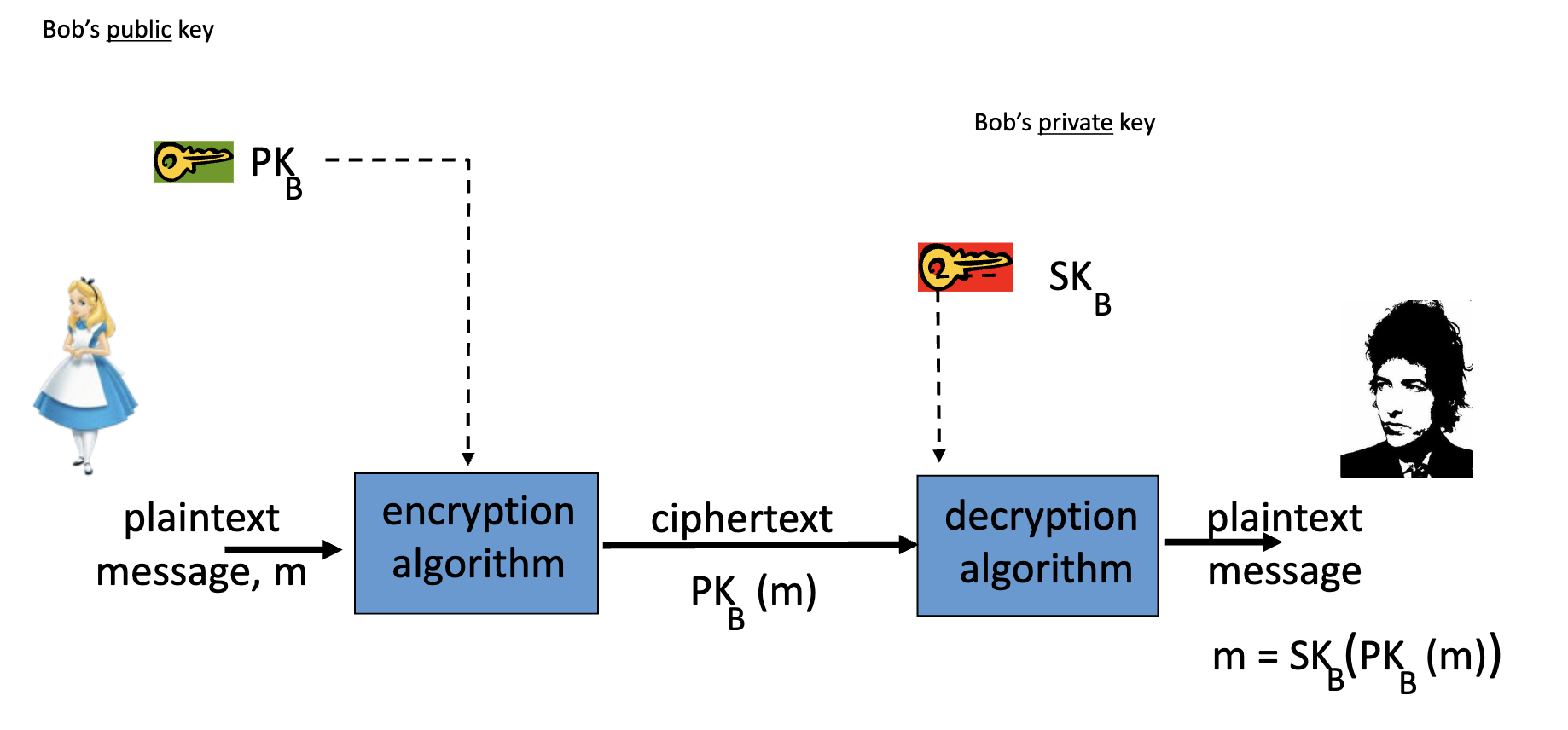
-
Data transmission (confidentiality):
- Alice encrypts using , Bob decrypts it to obtain ma using .
-
Secure Storage: encrypt with own public key, later decrypt with own private key.
-
Authentication:
- No need to store secrets, only need public keys.
- Secret/symmetric key cryptography: need to share secret key for every person you want to communicates with
-
Digital Signatures (authentication, integrity, non-repudiation)
Cons & Pros
Cons
- only the private key must be kept secret.
- relatively long life time of the key.
- more security services.
- relatively efficient digital signature verifications.
Pros
- low data throughput.
- much larger key sizes.
- distribution/revocation of public keys.
- security based on conjectured hardness of certain computational problems.
Comparison Summary
-
Public/asymmetric key
- encryption, signatures (esp., non-repudiation), and key
management
- encryption, signatures (esp., non-repudiation), and key
-
Conventional/symmetric
- encryption and some data integrity applications
-
Key sizes
- Keys in public key crypto must be larger ( e.g., 2048 bits for RSA) than those in conventional crypto ( e.g., 112 bits for 3-DES or 256 bits for AES )
- most attacks on “good” conventional cryptosystems are exhaustive key search (brute force)
- public key cryptosystems are subject to “short-cut” attacks (e.g., factoring large numbers in RSA)
- Keys in public key crypto must be larger ( e.g., 2048 bits for RSA) than those in conventional crypto ( e.g., 112 bits for 3-DES or 256 bits for AES )
Block Cipher
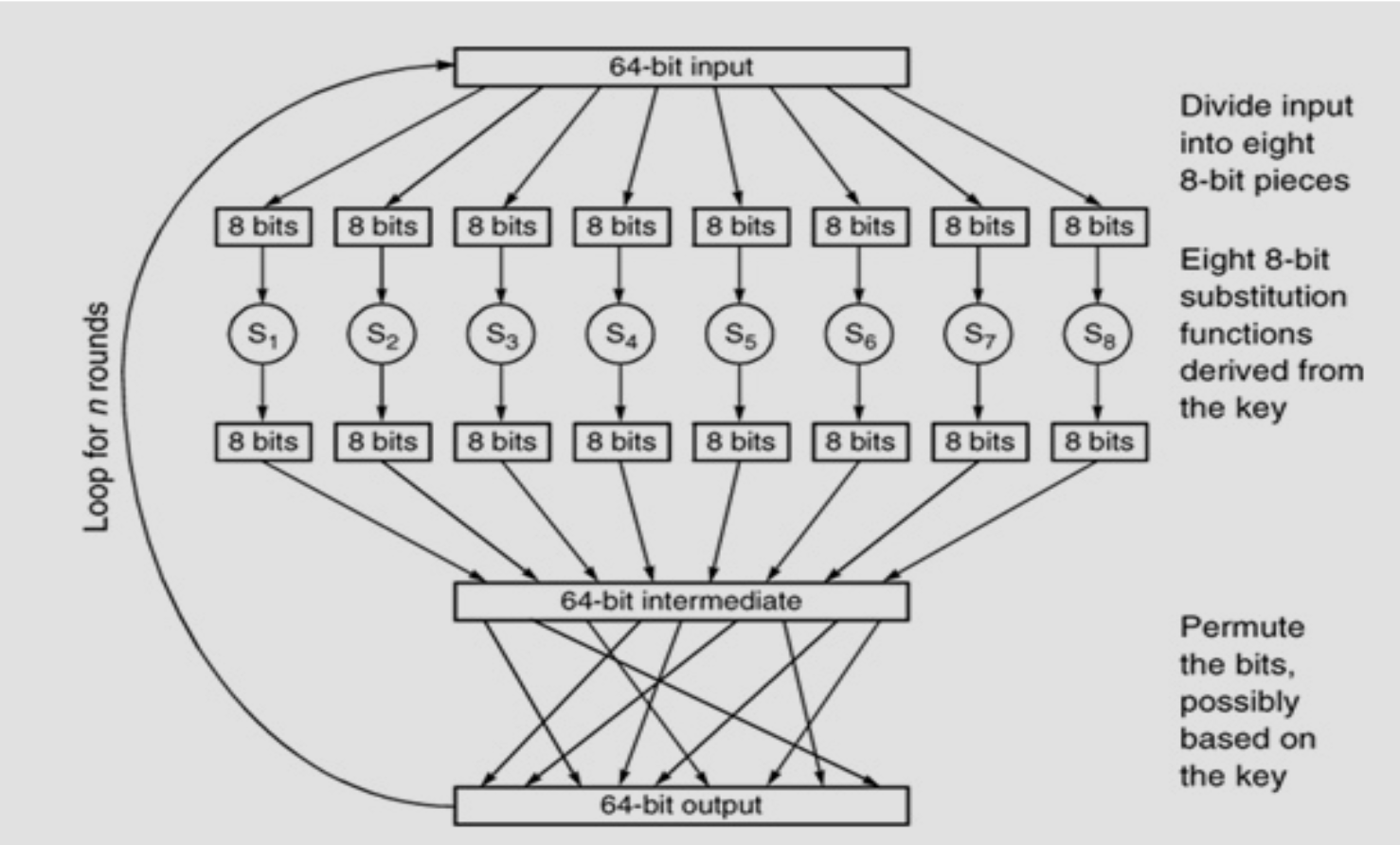

Feistel Cipher
-
Block Size: larger block sizes mean greater security
-
Key Size: larger key size means greater security
-
Number of Rounds: multiple rounds offer increasing security
-
Subkey Generation Algorithm: greater complexity leads to greater difficulty of cryptanalysis
DES
Resources
General
- Most widely used encryption method in1970s/80s/90s, and AES took over in early 2000s.
- Block cipher (in native ECB mode).
- Plaintext processed in 64-bit blocks.
- Key is 56 bits.
Basic Structure
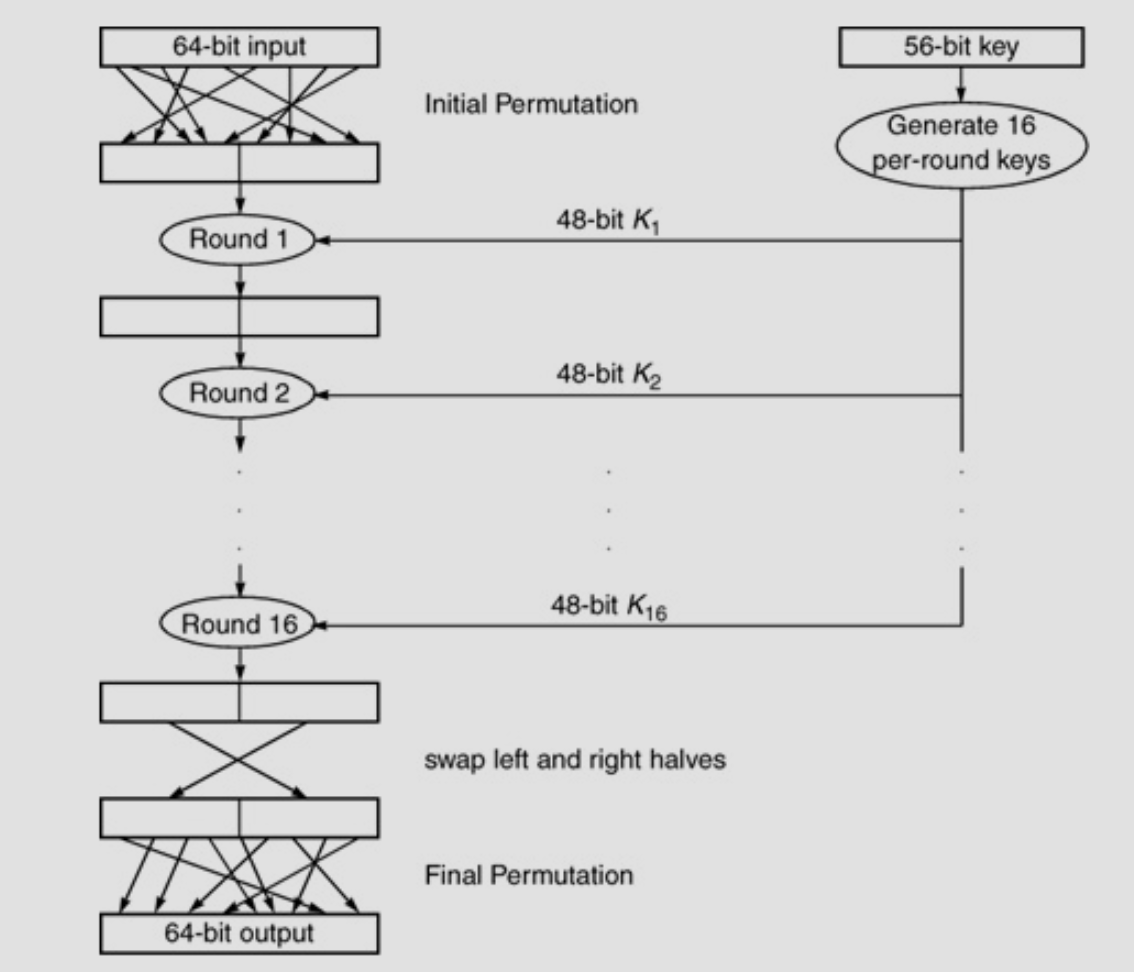
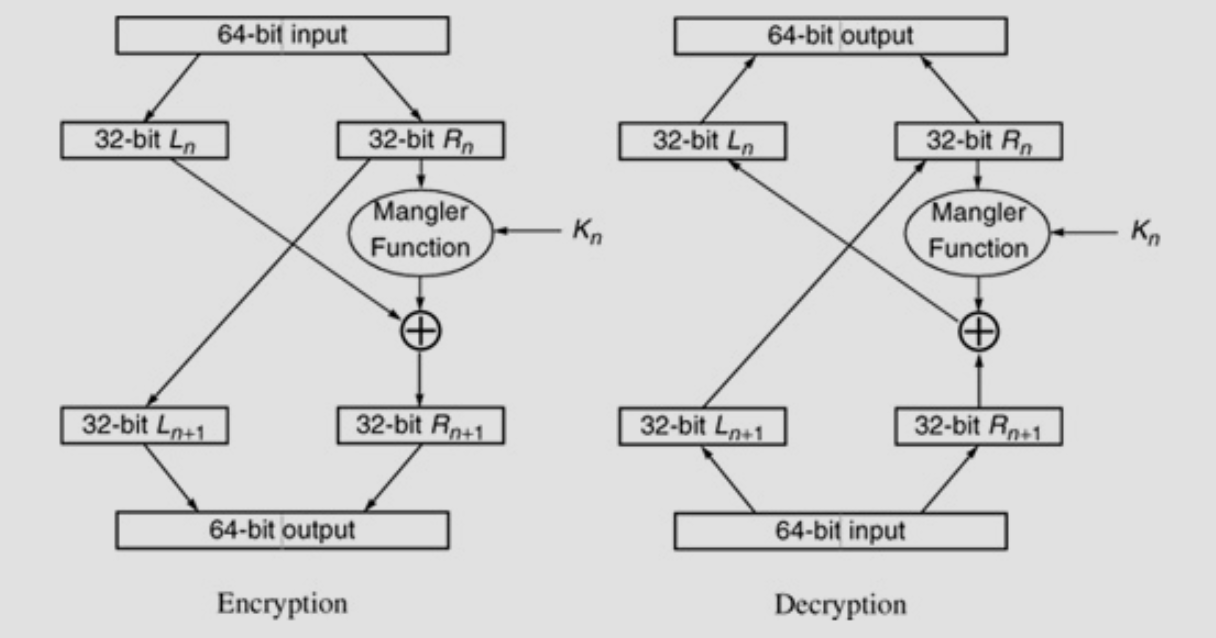
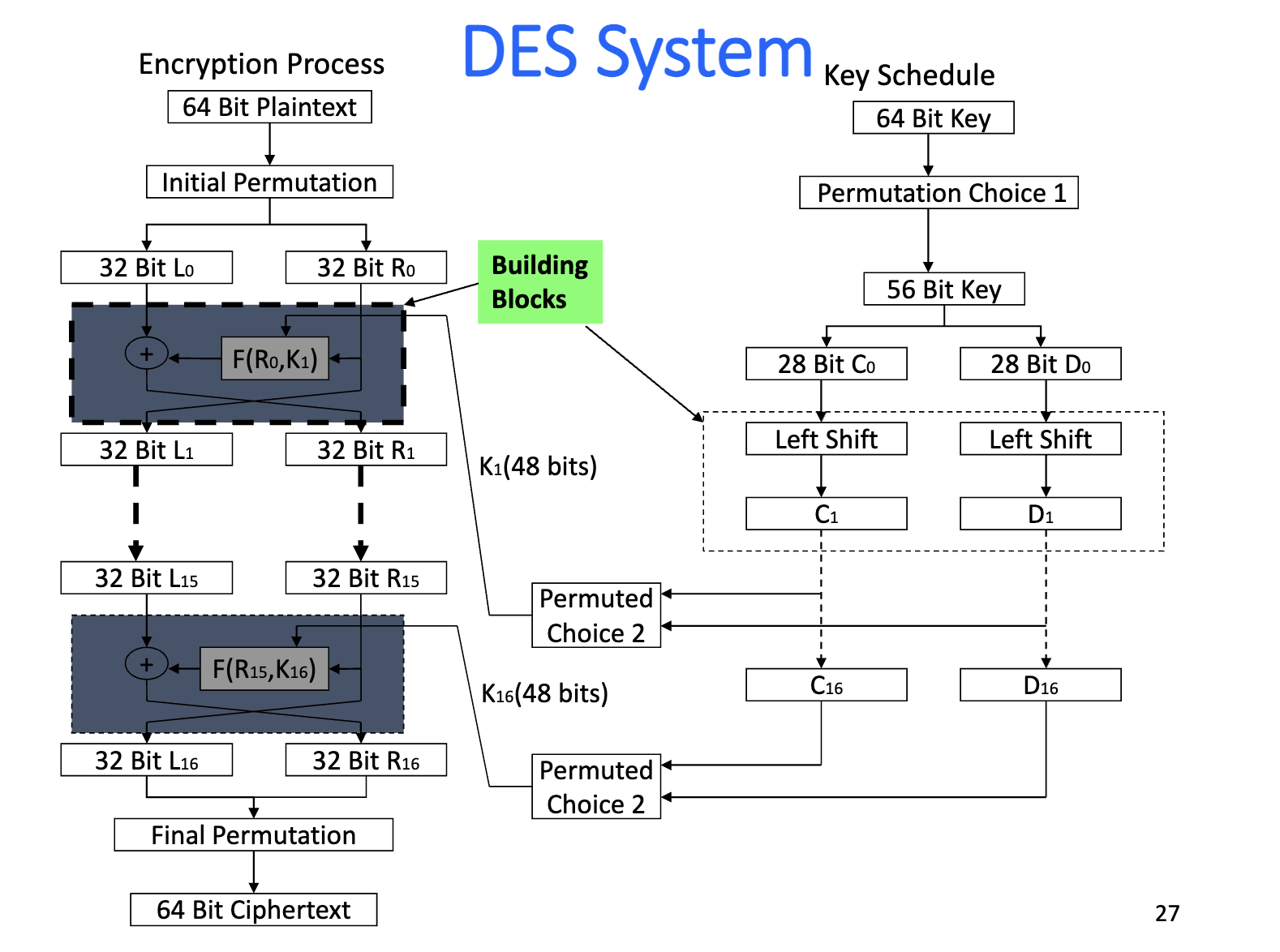
Details
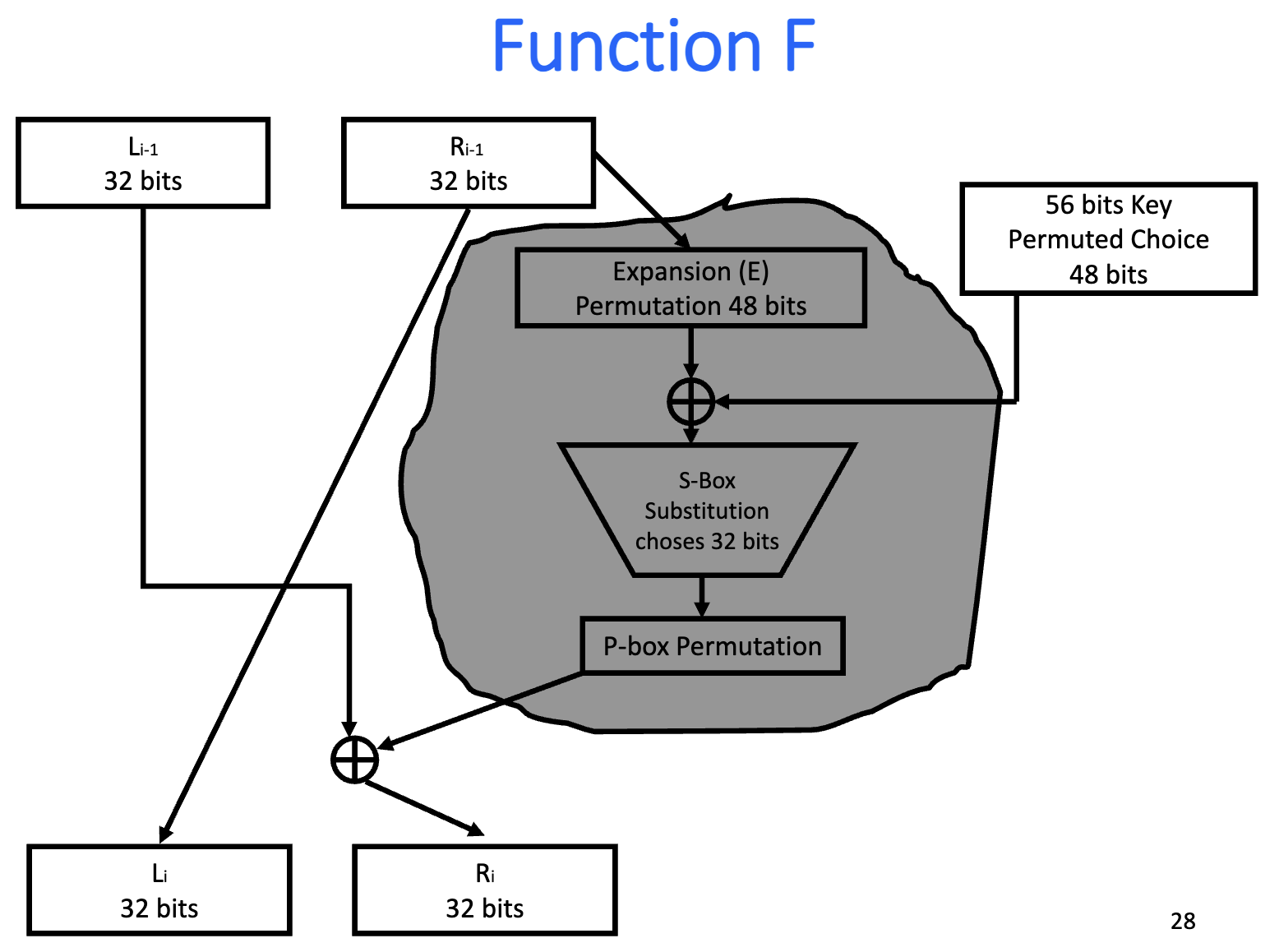
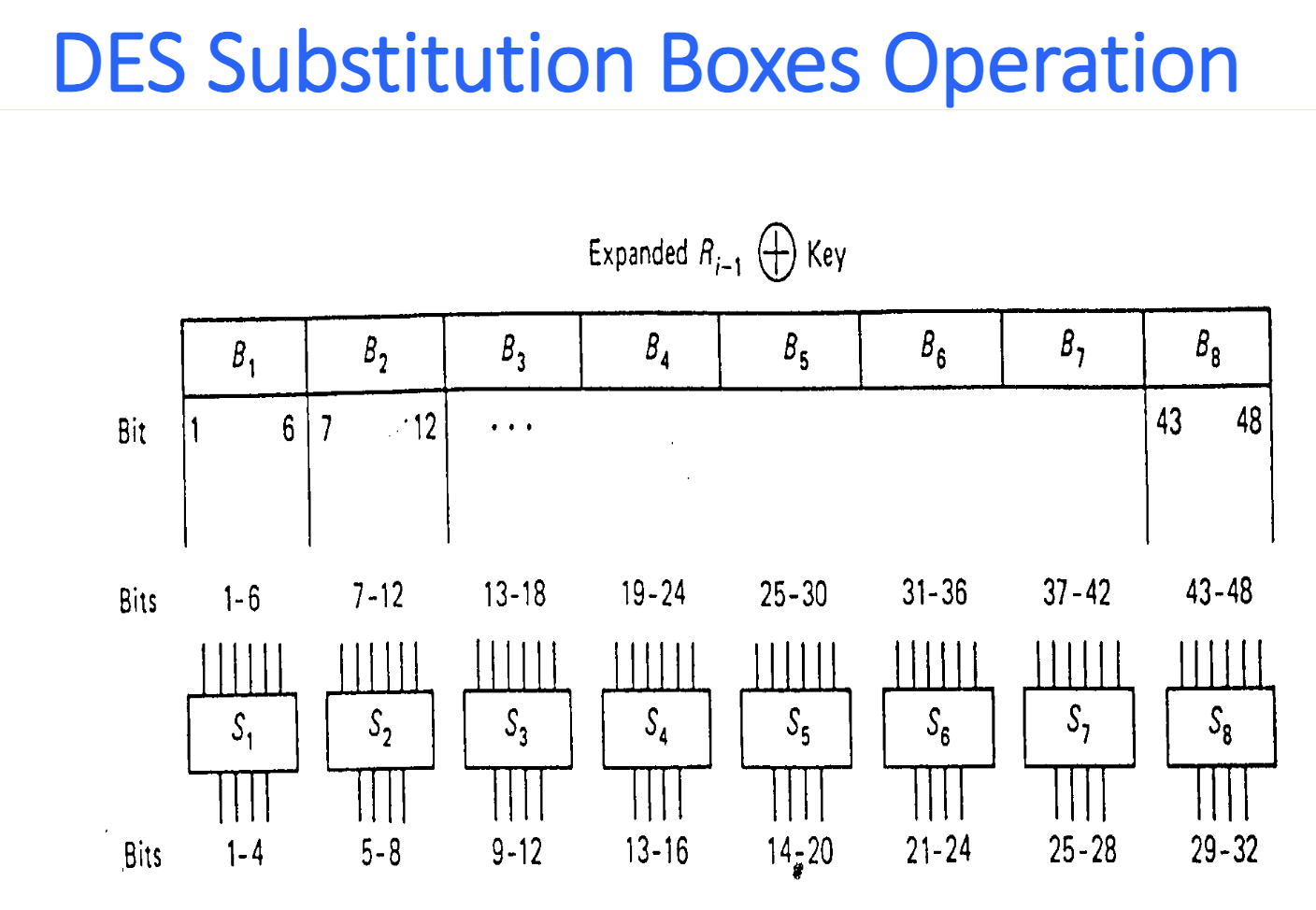
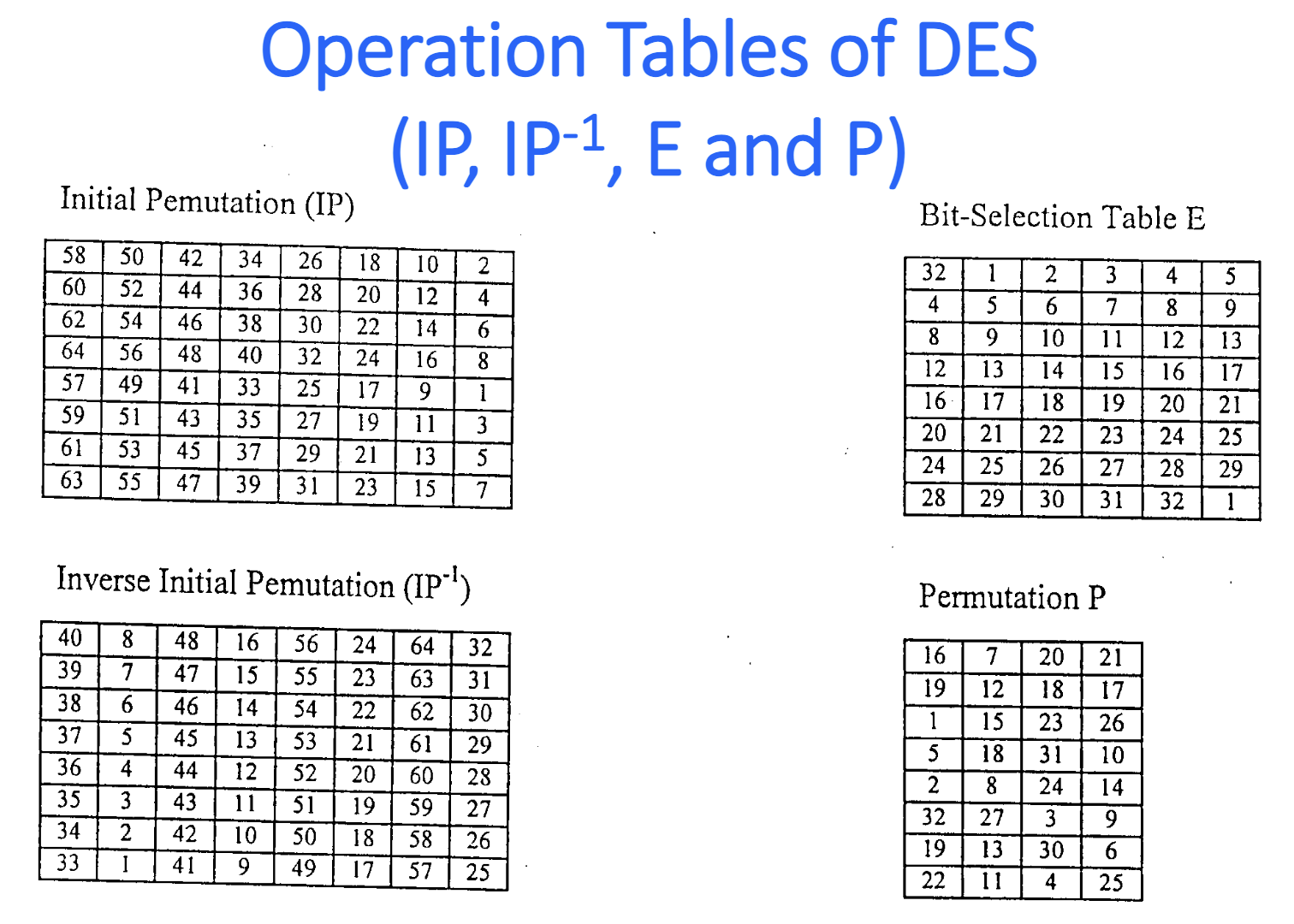
Key
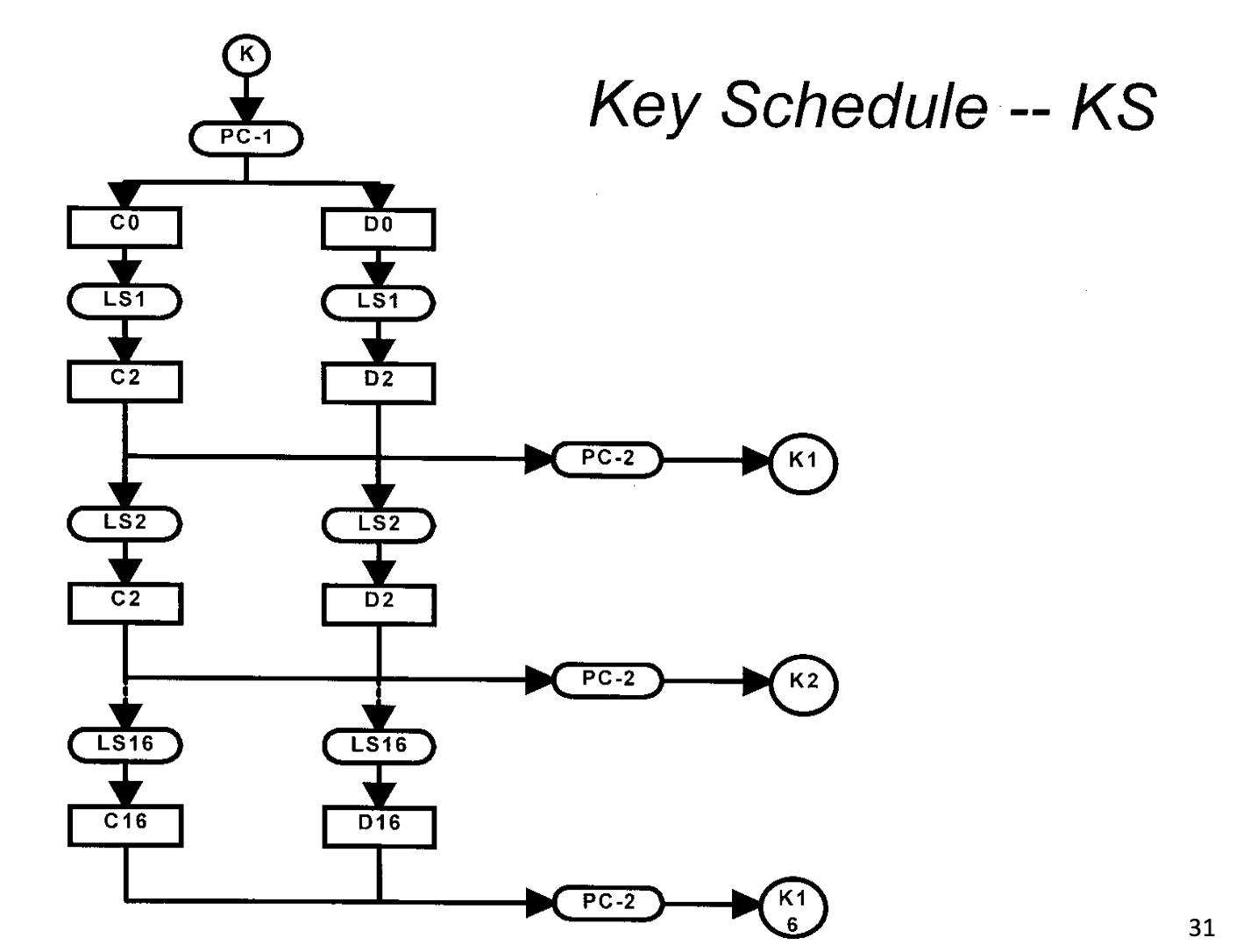

Breaking DES
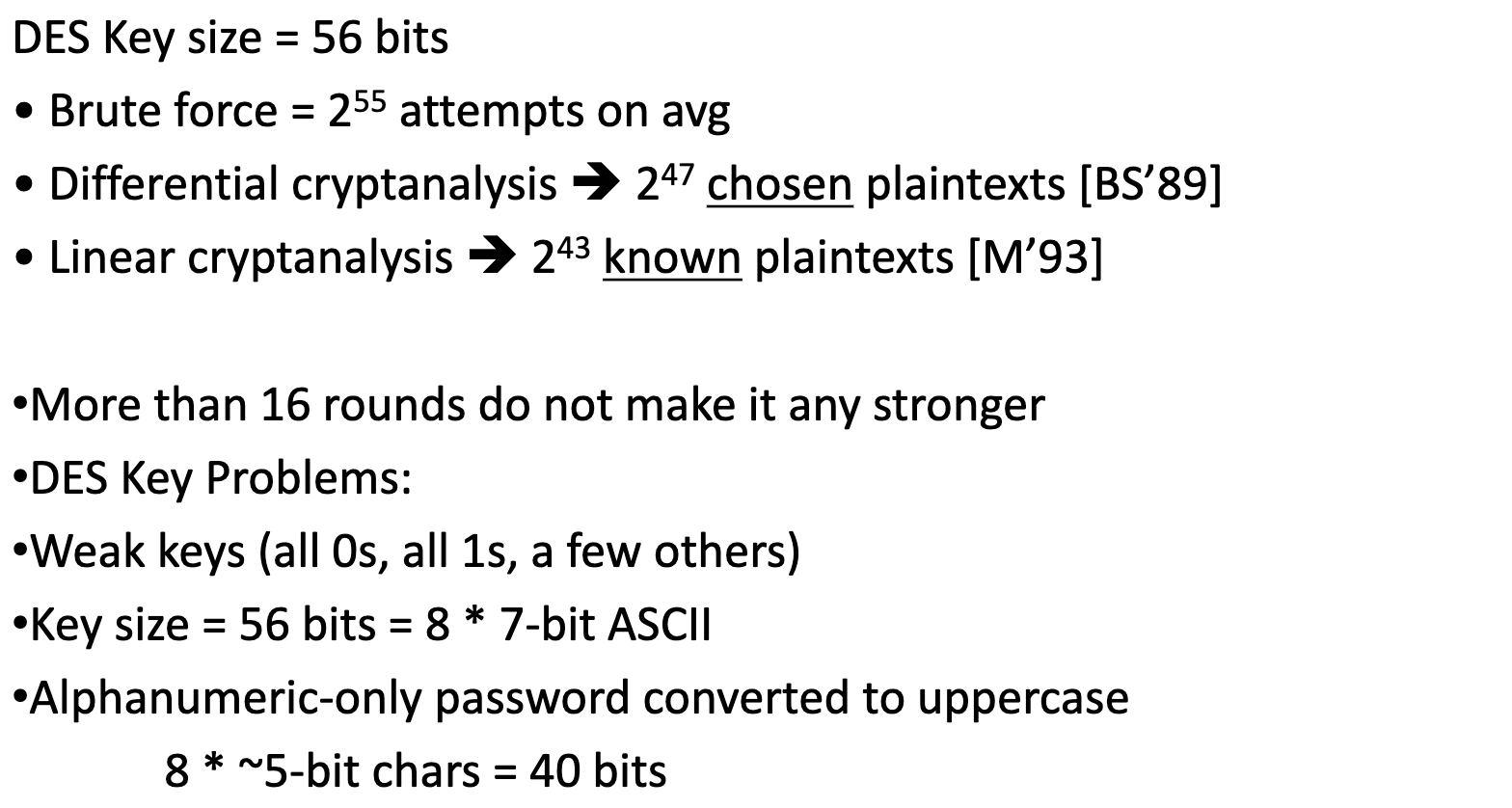
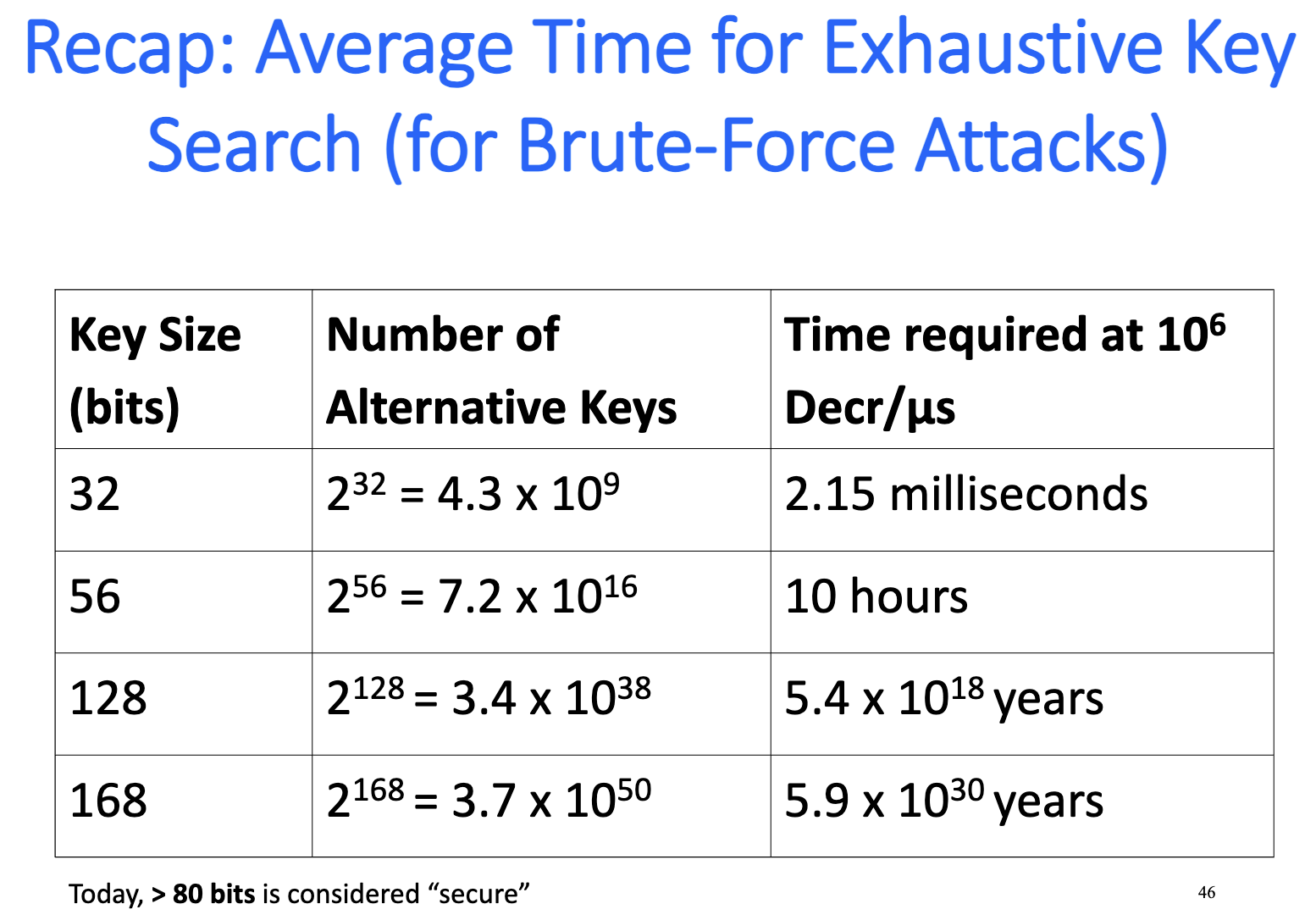
2DES
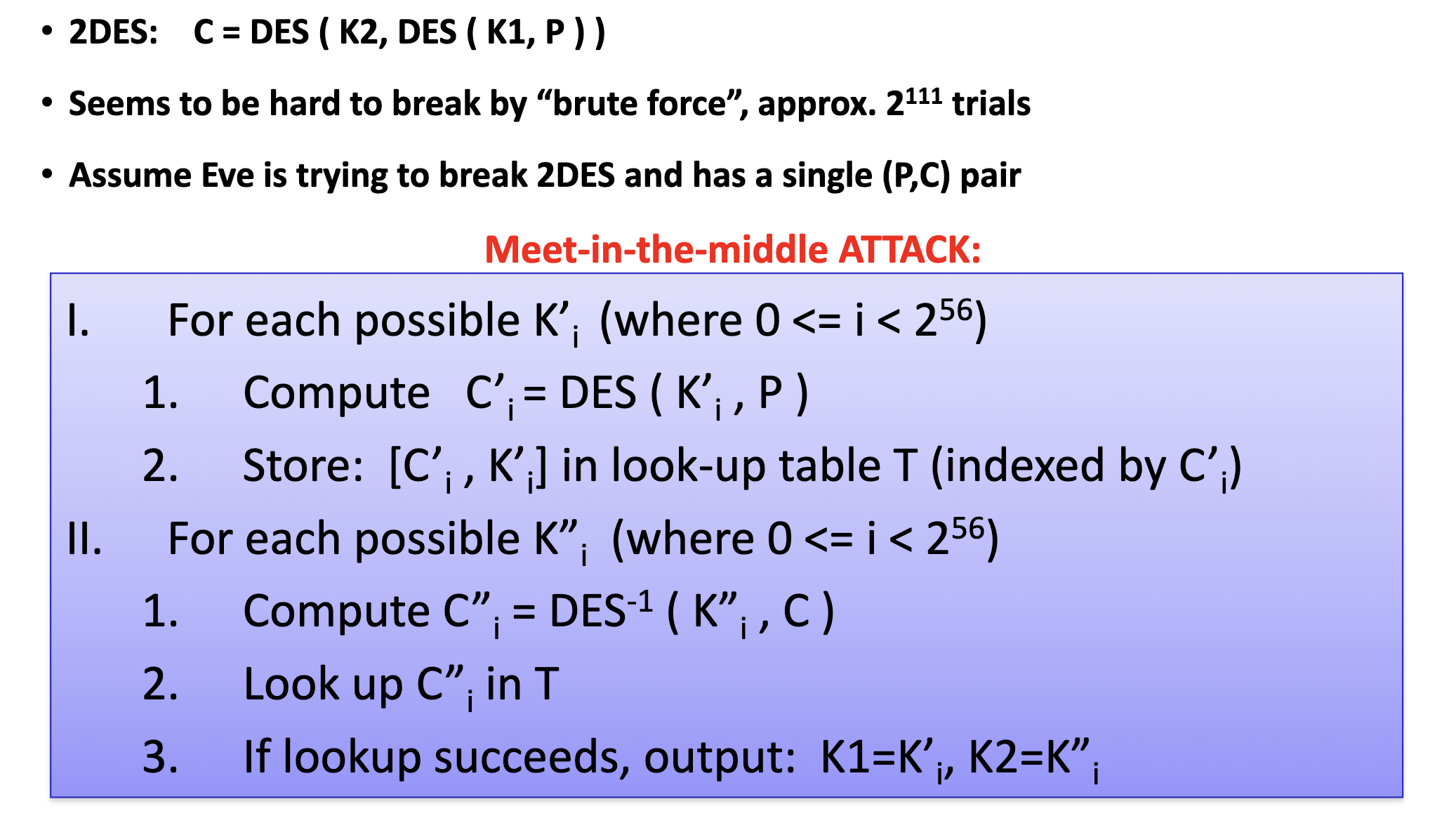
TOTAL COST: O( +) operations + O() storage
DES Variants
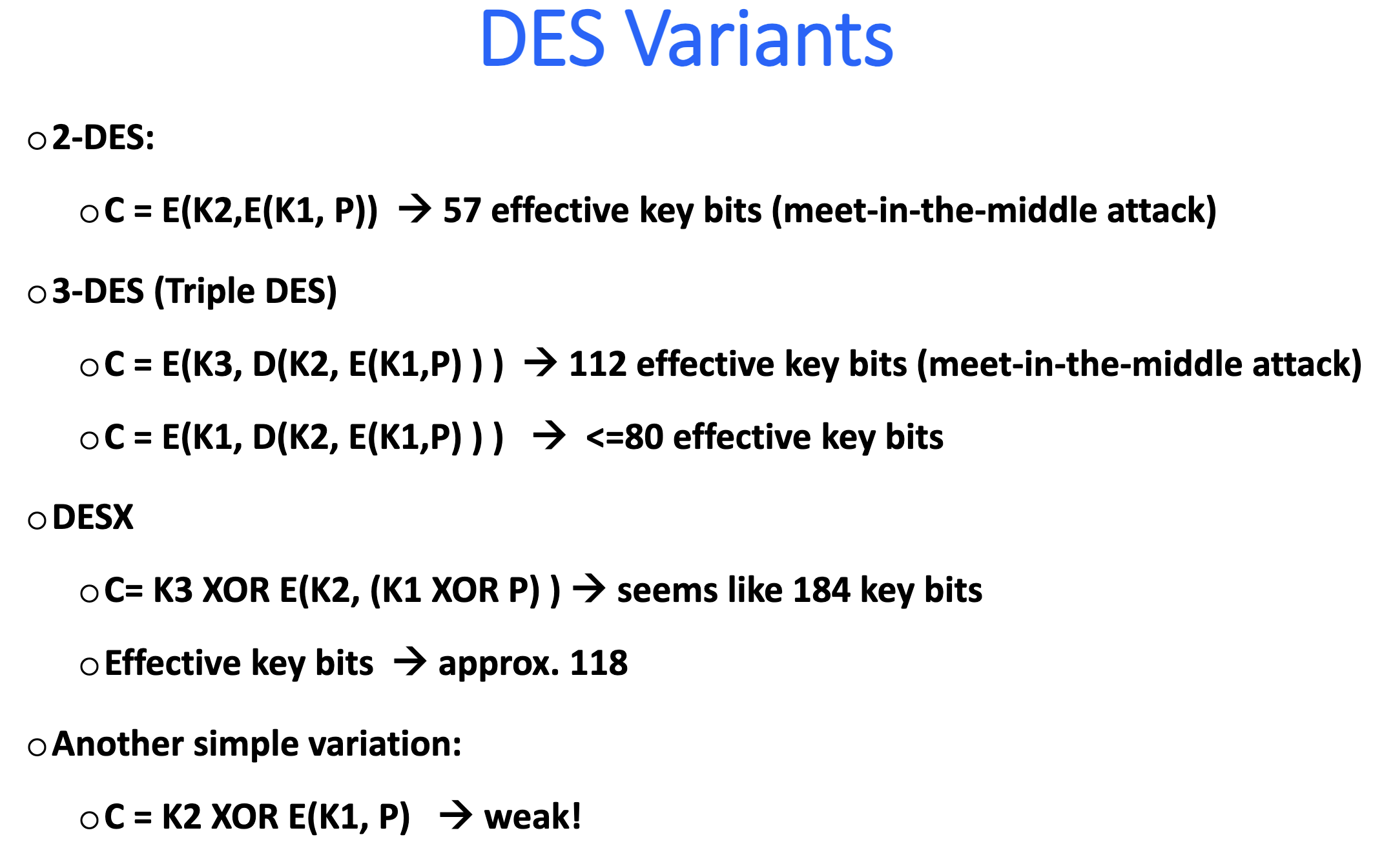
Lec 4 AES & Modes of Operation
AES
Resources
Rijndael
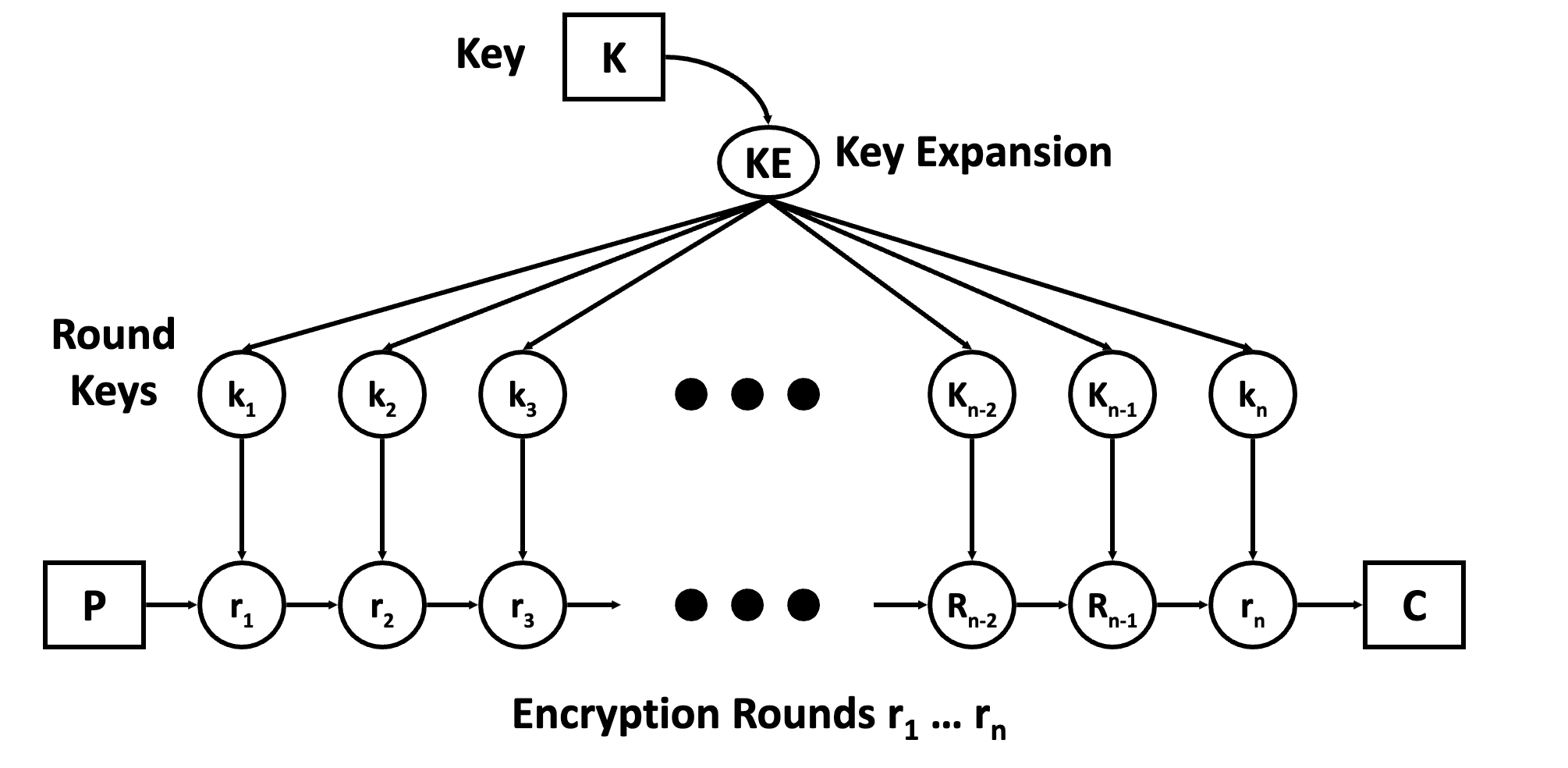

Each round performs the following operations:
-
Non-linear Layer: No linear relationship between the input and output of a round.
-
Linear Mixing Layer: Guarantees high diffusion over multiple rounds.
- Very small correlation between bytes of the round input and the bytes of the output.
-
Key Addition Layer: Bytes of the input are simply XOR’ed with the expanded round key.
Changing
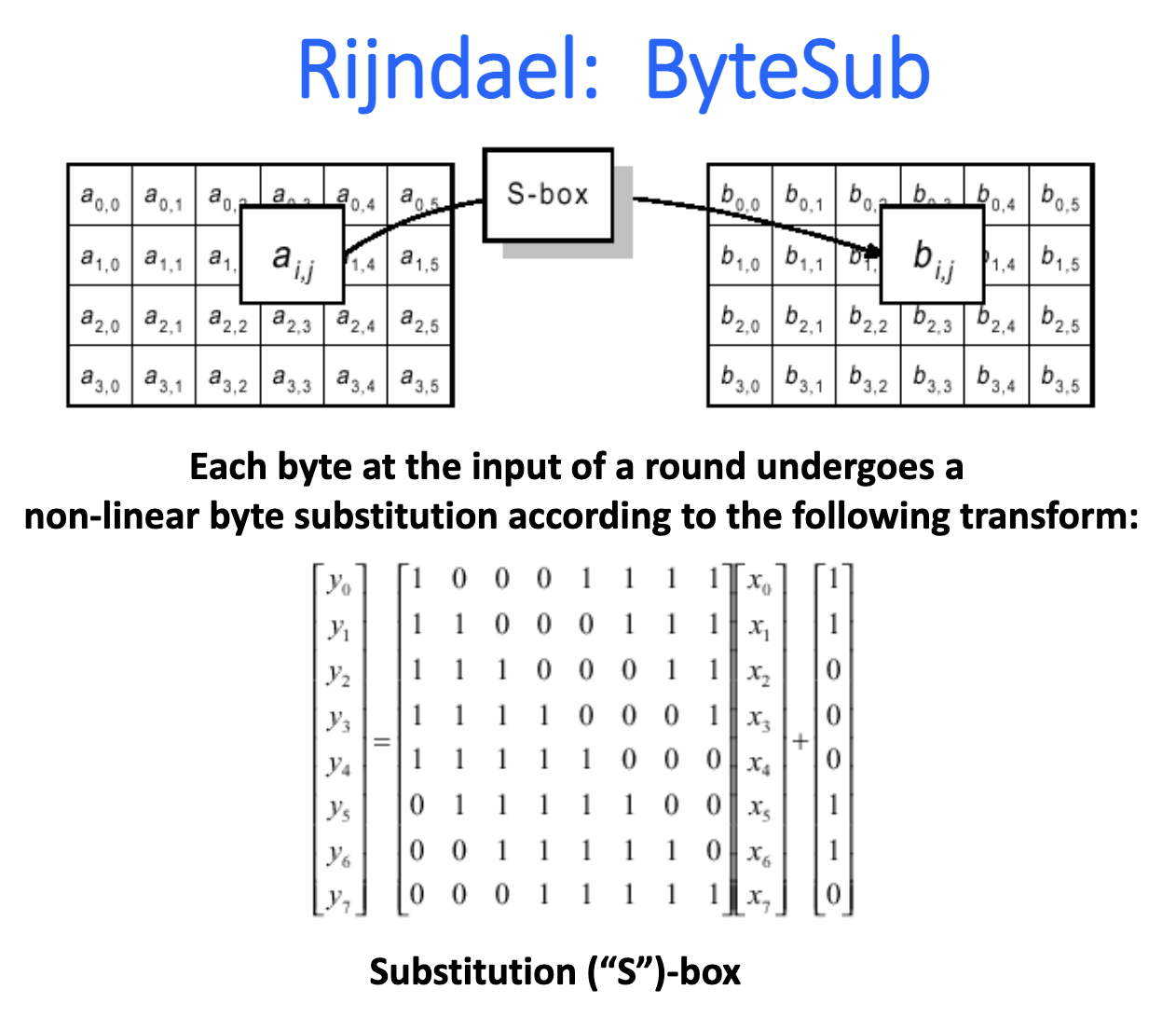
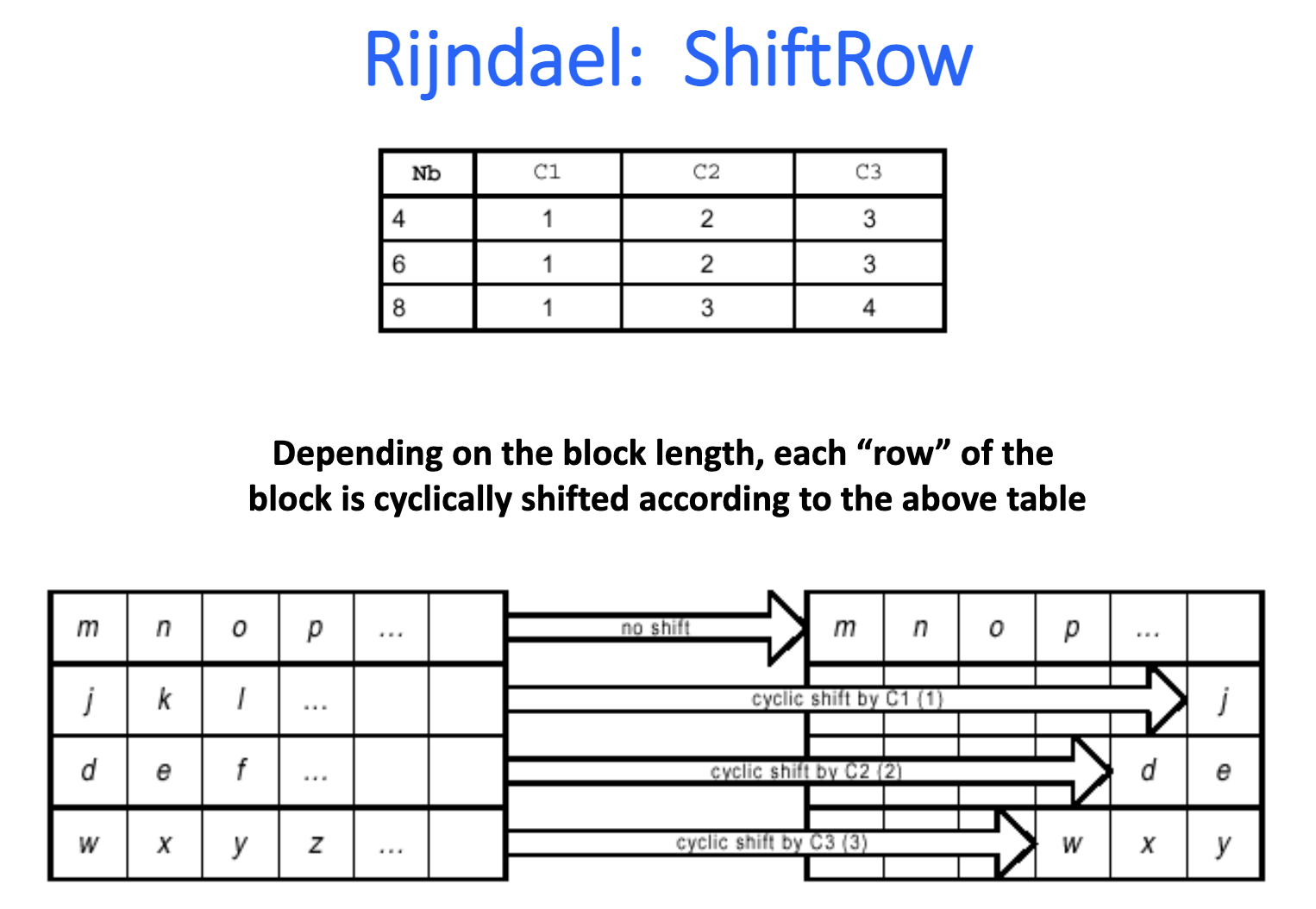

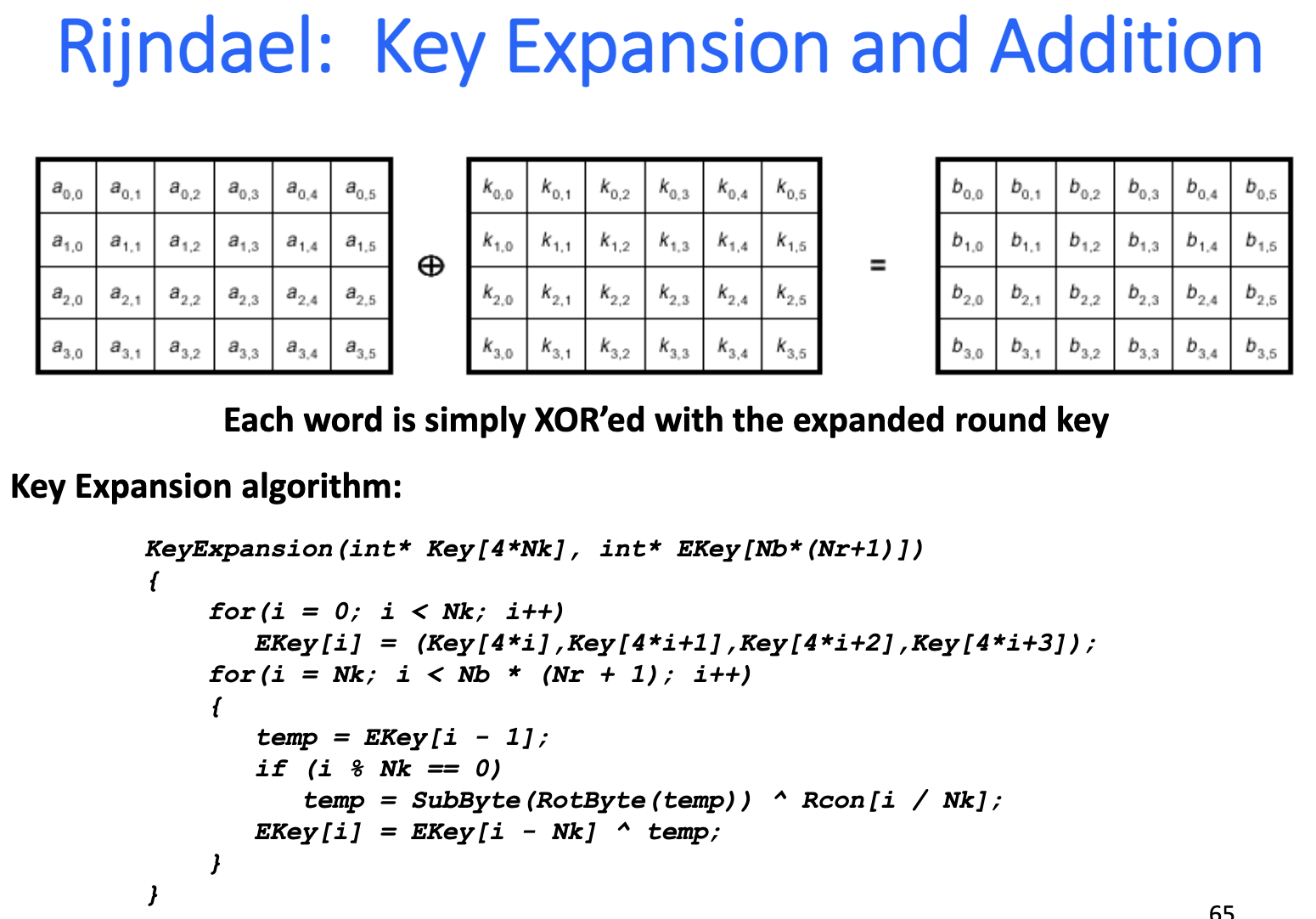
Implementations
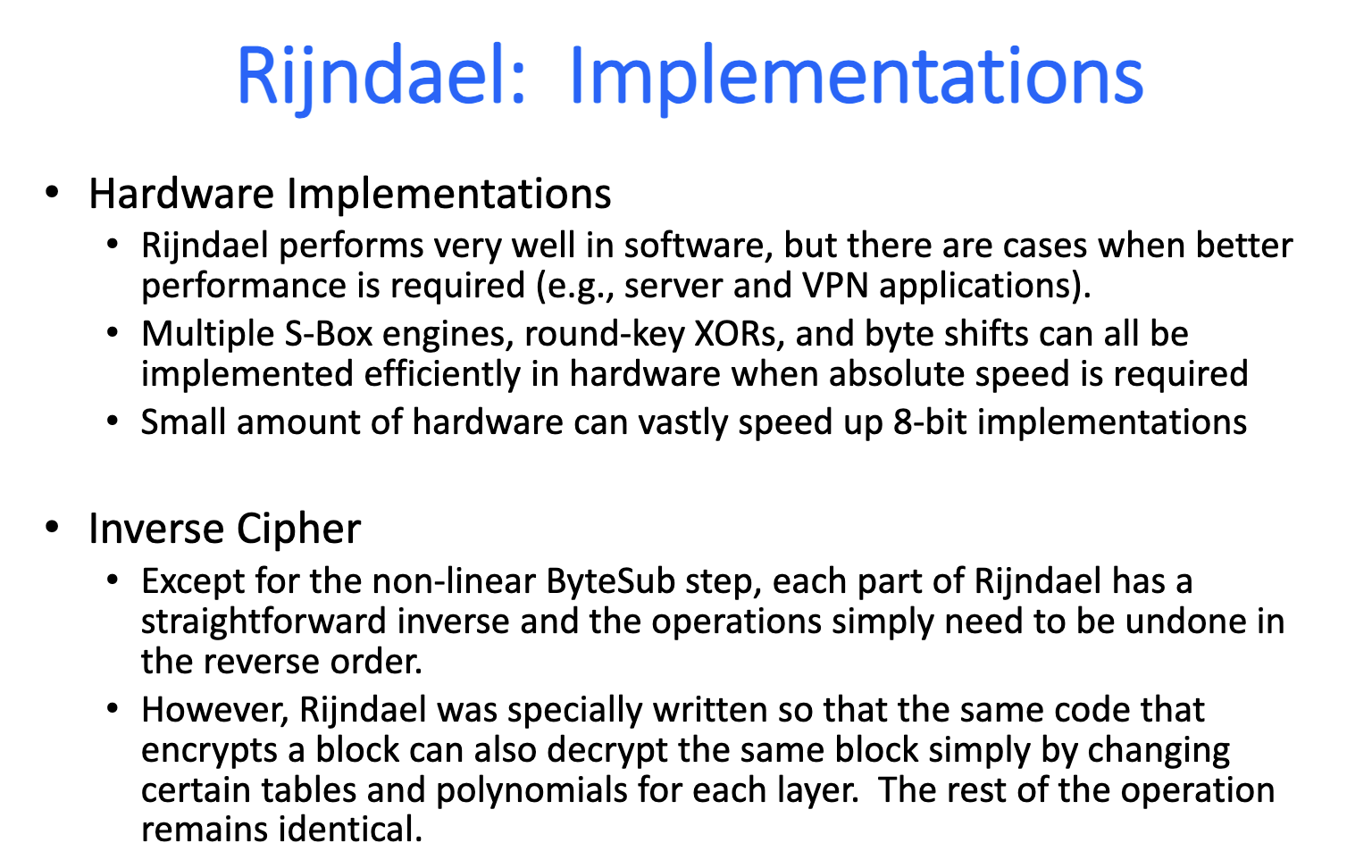
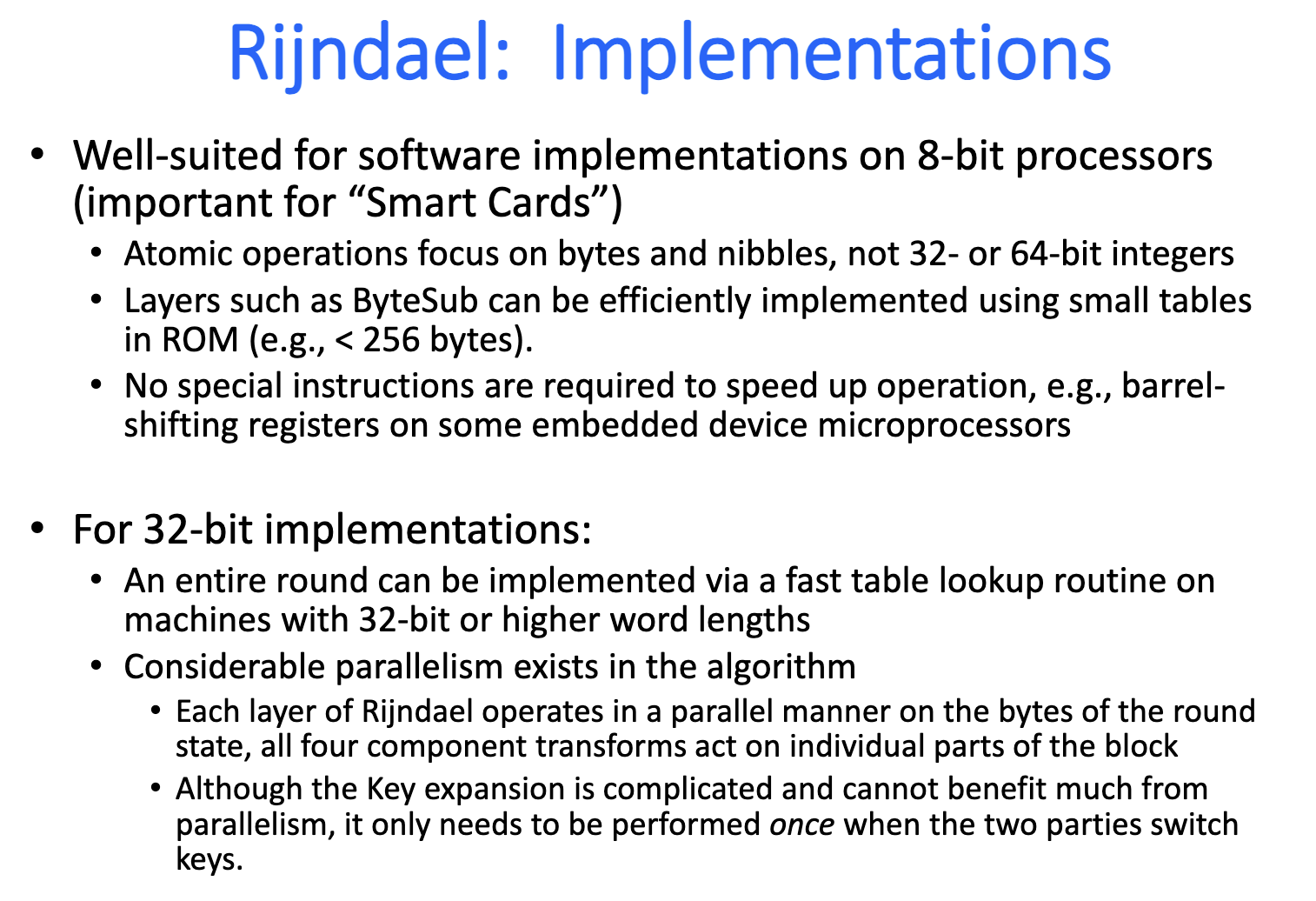
Modes of Operation
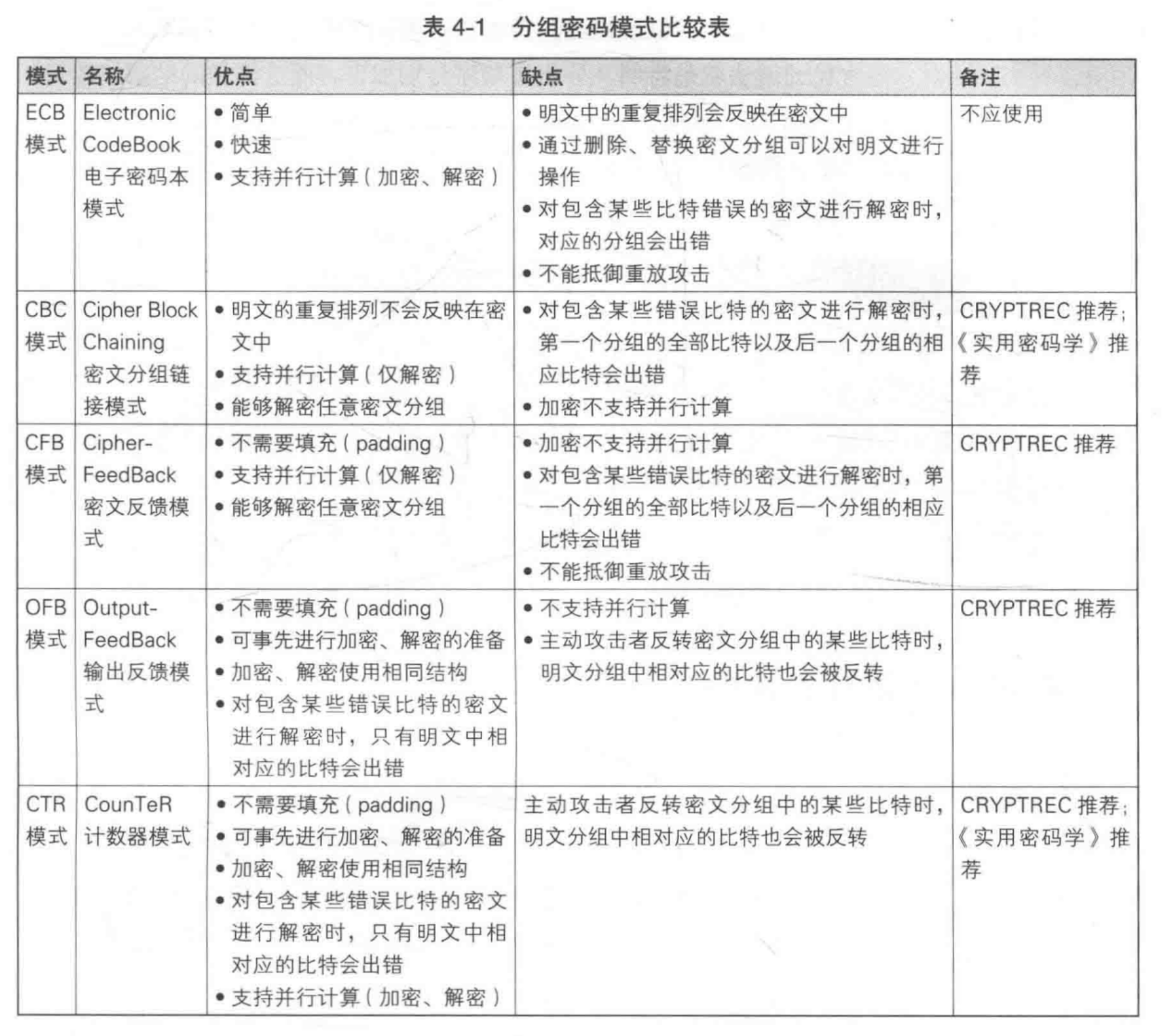
Electronic Code-Book (ECB) Mode
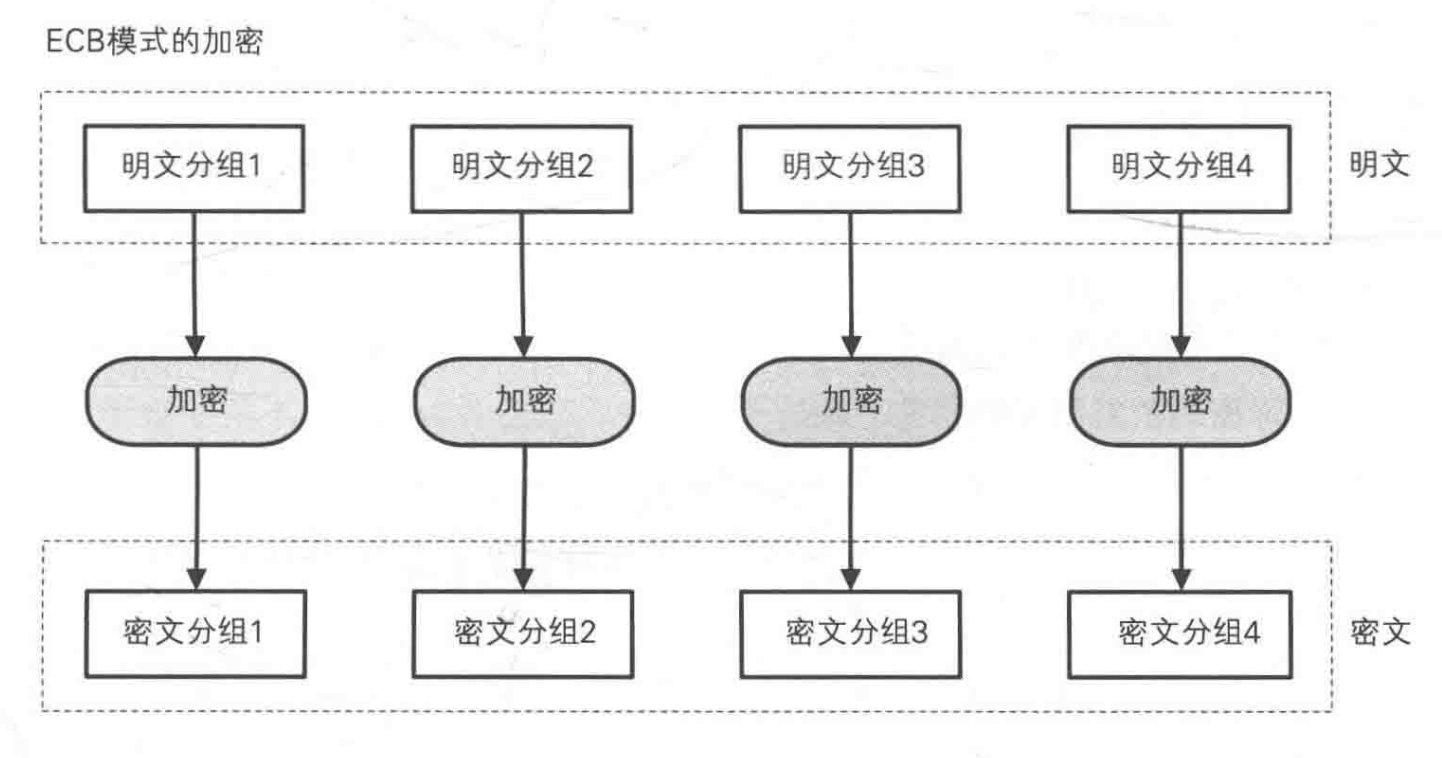
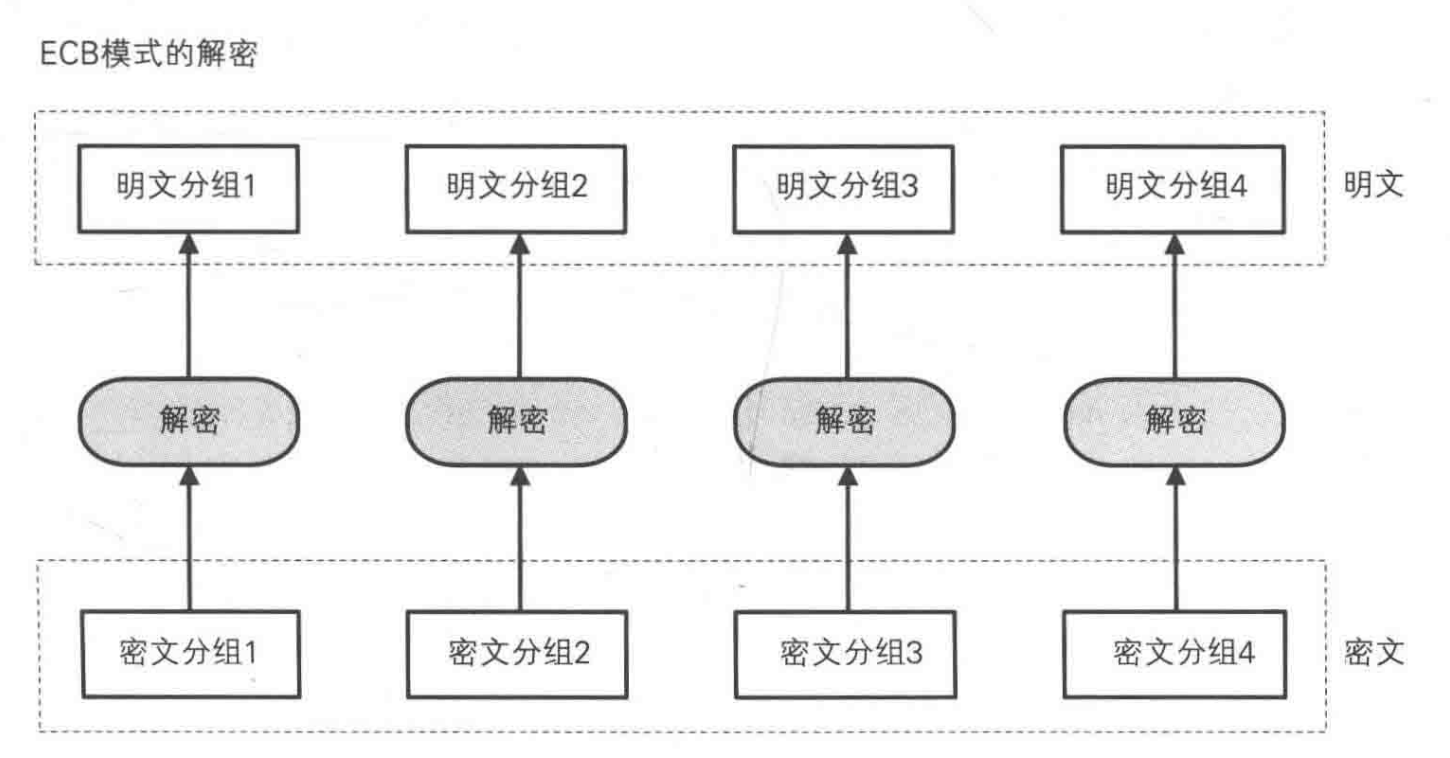
Cipher-Block Chaining (CBC) Mode

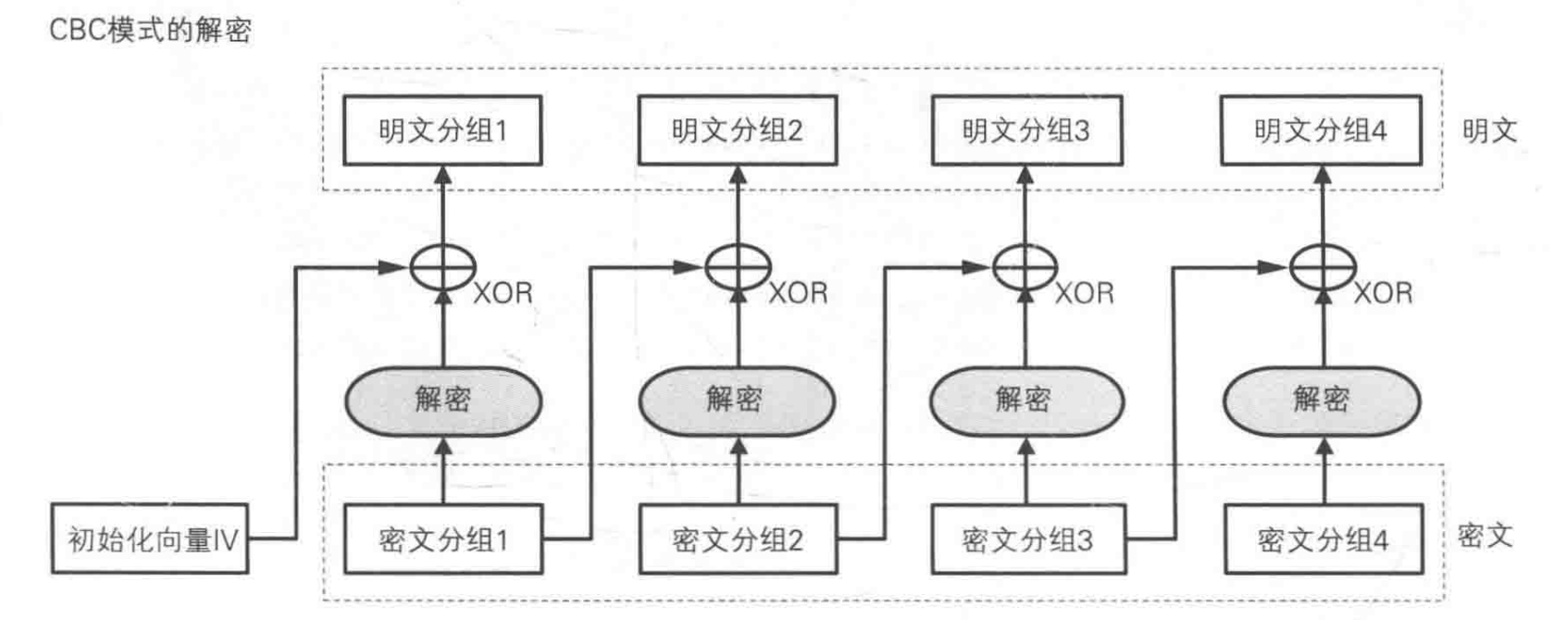
Output Feedback (OFB) Mode
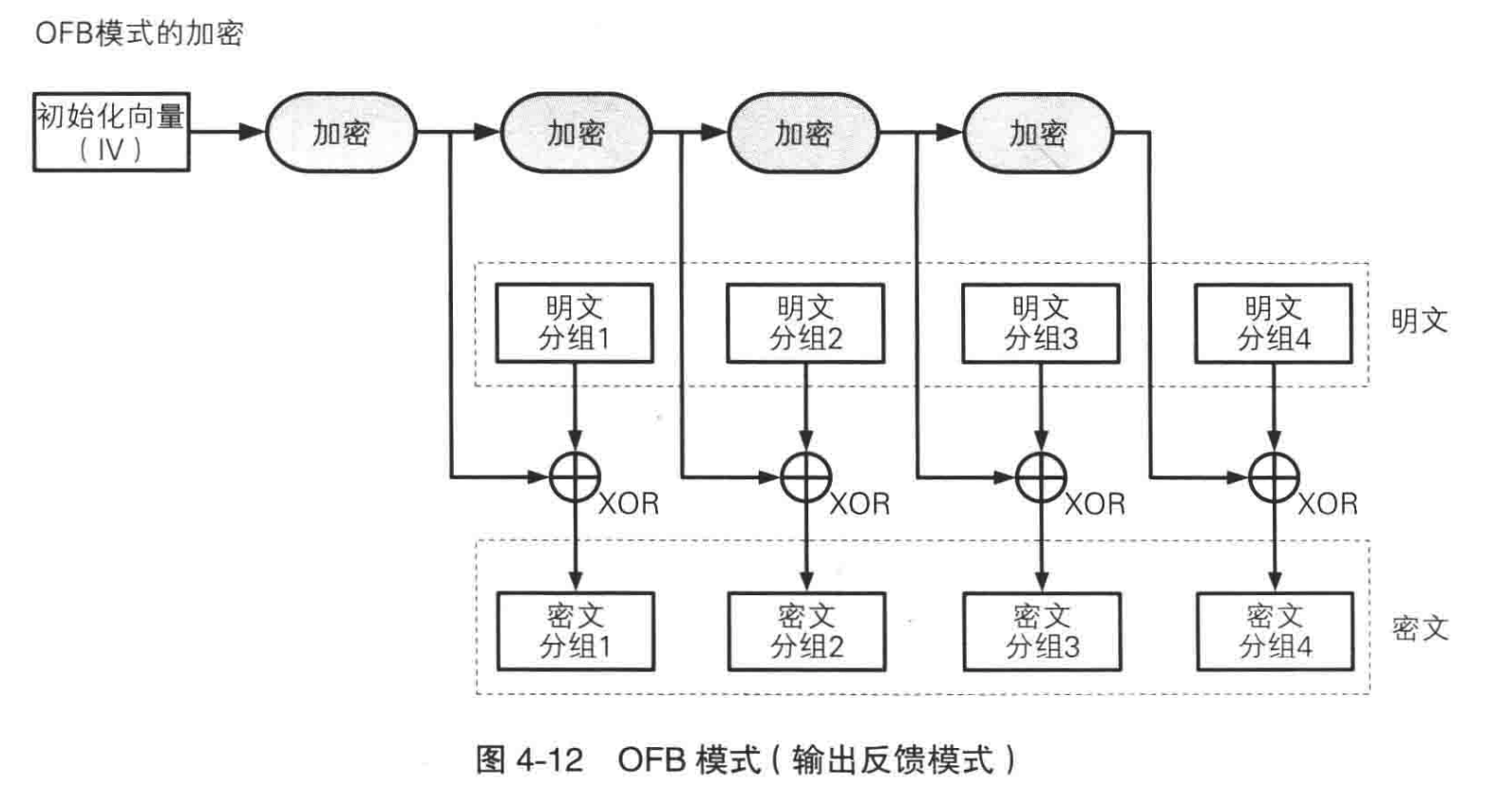
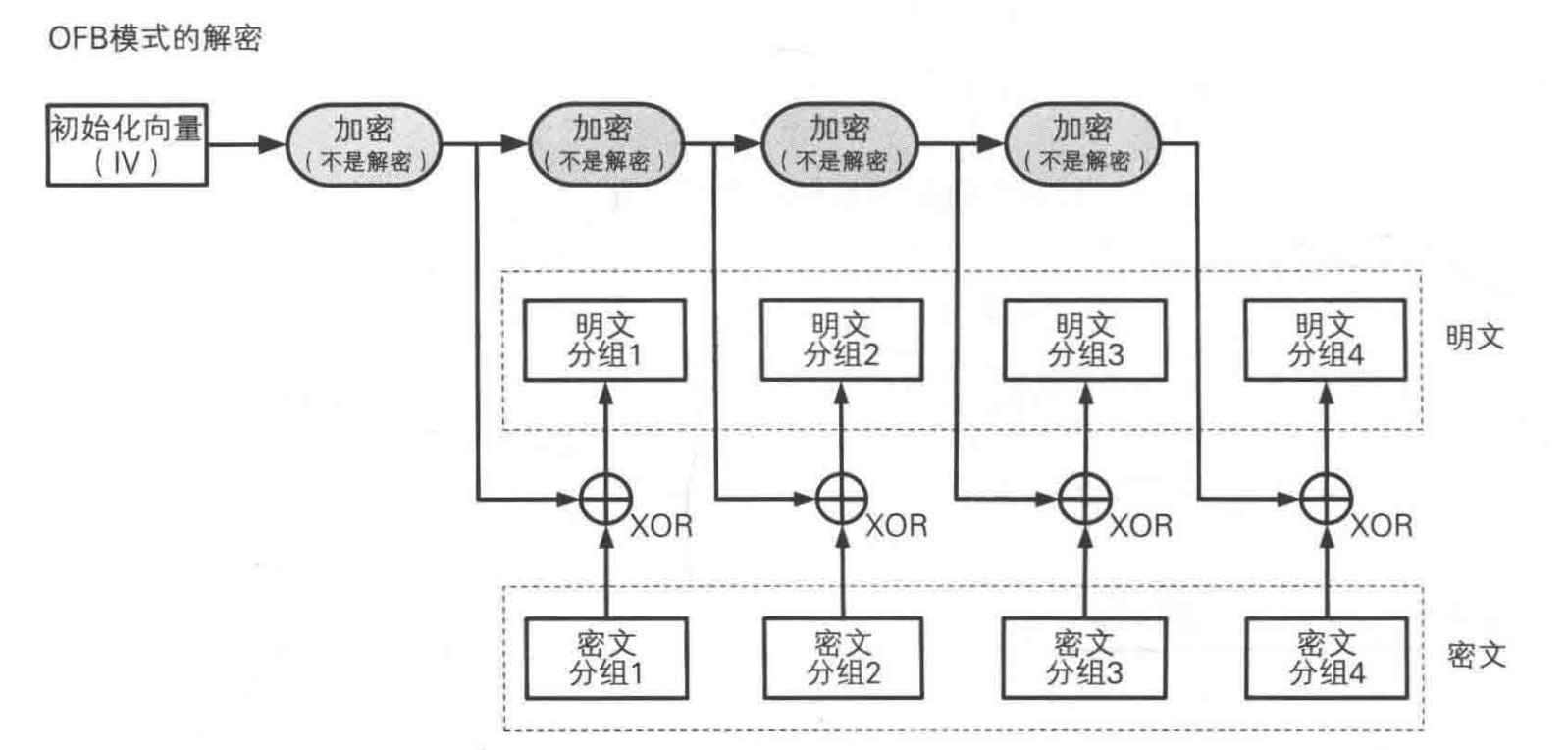
Cipher Feedback (CFB) Mode
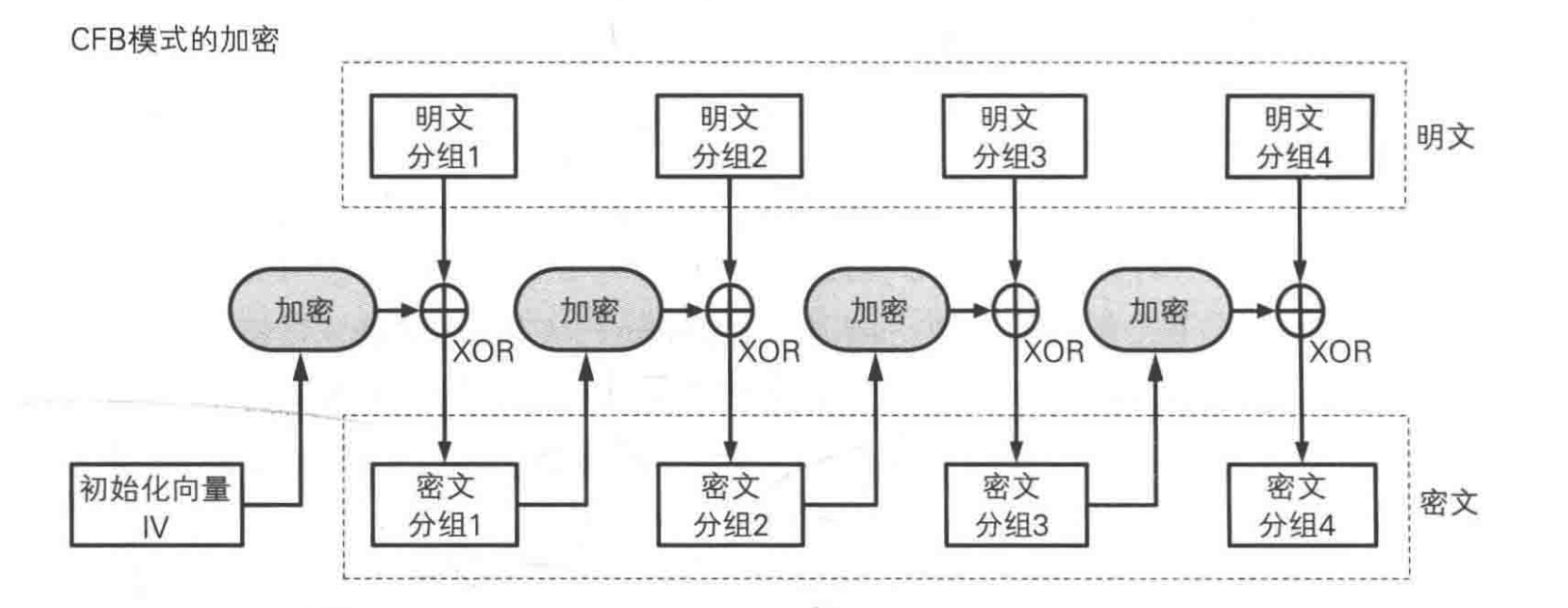

Counter (CTR) Mode
